|  | |
Is Thinning Key?
Join us this week as we discuss how a word means one thing in forestry and something completely different in arboriculture… and yet, can actually mean the same thing in both. Listen to see if we can answer the question “Is Thinning Key?”
Species Spotlight
This week's tree is the foundation of the South. Loblolly Pine, Pinus taeda, is one of the Southern yellow pines and very important for wood production in the United States.
|
|  | |
Gamification is Key
Are you ready to level up? Have you found the right power ups for your life and career? Join us this week as we look at how “Gamification is Key” for arboriculture and forestry.
Species Spotlight
This week's tree is from a large family, but can perform better in hotter, drier, and more alkaline settings than many of it's cousins. Listen to this episode of #TreesAreKey to learn more about bigtooth maple, Acer grandidentatum.
|
| 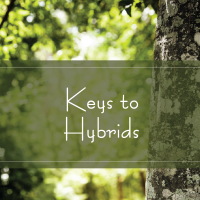 | |
There are so many trees out there that have special names. We’ve talked about them some in the past, but join us this week as we explore more in “Keys to Hybrids”.
Species Spotlight
Do you love citrus, but think it's too cold where you are? Check out this week's species spotlight to learn more about a Texas Superstar called 'Artic Frost' satsuma.
|
|  | |
We’ve talked about innovation recently, join us this week as we delve a little deeper into one method on “Incubators Are Key”.
Species Spotlight
This week's tree is a large Texas native usually found along water ways in East Texas, but can be found in a few areas of central Texas. Carolina Basswood, Tilia americana var. caroliniana, has soft yet tough wood that is valued by woodcarvers. Listen to this episode of #TreesAreKey to learn more.
|
|  | |
Trees Are Key
There’s a strong connection between trees, forests, and our water sources. This week, join us as we delve into why “Trees Are Key For Water Quality”.
Species Spotlight
This week's tree is closely associated with this week's topic. Eastern cottonwood, Populus deltoides ssp. deltoides, is common along streambanks, riverbottoms, and sandbars. Learn more by listening to this episode of #TreesAreKey.
|
|  | |
Trees Are Key
Let’s celebrate our resilience by looking at the new ways we are doing things to adapt to the current situation.
Species Spotlight
This week's tree is native to East Texas, has a distinctive bark and can help make tasty barbecue. Listen to this episode of #TreesAreKey to learn more about shagbark hickory, Carya ovata.
|
|  | |
Trees Are Key
Water is Key to life for us and our trees. This episode, we explore several of the ways that water is vital for our trees and review the best way to supplement their water when Mother Nature is being stingy.
Species Spotlight
This week's tree has an affinity for this week's topic. It's also a tree that gets large and can pose a risk in an urban environment. Water oak, Quercus nigra, is a Texas native you should know. |
|  | |
Trees Are Key
Are there things you do the same way every time? Are there places that you go the same day every week? Are you in an organization that does things the same way every year at their annual conference? This episode we explore why “Rituals Are Key”.
Species Spotlight
This week's tree is a small, Texas native that has nice fruit that birds love. Listen to this episode of #TreesAreKey to learn about Carolina buckthorn, Frangula caroliniana. |
|  | |
Trees Are Key
Our Texas Forest Action Plan which helps guide our agency’s efforts for the next 10 years and how you can help us with Urban Forest Sustainability, Woodlands Conservation, Forest Resources, Water Resources, and Wildfire and Public Safety.
Species Spotlight
This week's tree is, usually, well armed and has been introduced to Texas. Black Locust, Robinia pseudoacacia, is a tough tree that can thrive in depleted soils because it is a legume. |
|  | |
Trees Are Key
We’ve talked about photosynthesis, and we've also looked closer at respiration. In this episode, we delve even deeper and explore where most energy is released during respiration in “Keys to the Krebs Cycle.”
Species Spotlight
Listen to this week's #TreesAreKey episode to learn more about one of our Texas native evergreens Rocky Mountain Juniper, Juniperus scopulorum. |
|  | |
Trees Are Key
Join us this week as we explore the world of dicots. What makes trees different from grasses? Well, one of the differences is obvious from the point of germination.
Species Spotlight
This week's tree is a beautiful, blooming import. Goldenraintree, Koelreuteria paniculata, can grow in a variety of soils and has a cousin that may do better in South Texas. Listen to this episode of #TreesAreKey to learn more about this great tree. |
|  | |
Trees Are Key
Many games like poker, basketball and risk are finite games. We know the players, the rules and the objective of the game. Join us this week as we explore another type of game in “Keys to the Infinite Game.”
Species Spotlight
This week's tree loves water, can be found in many areas of Texas, and was a folk remedy for head aches. Listen to this episode of #TreesAreKey to learn more about black willow, Salix nigra. |
|  | |
Trees Are Key
Photosynthesis is key for our trees as we’ve talked about many times, it's how they feed themselves. Join us this week as we explore the ‘opposite’ of photosynthesis in “Respiration is Key.”
Species Spotlight
Listen to this episode to learn more about a Texas native . Texas ash, Fraxinus texensis, is one of many trees that are under threat from emerald ash borer (EAB). EAB is a pest that is expanding its range across Texas.
|
| 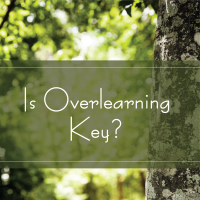 | |
Trees Are Key
This has been a good time for many to increase knowledge, skills and abilities. Let’s continue to explore the how to of personal and professional development.
Species Spotlight
This week's tree is a Texas native that can be easily confused with a common non-native invasive tree in many areas. Western Soapberry, Sapindus saponaria var. drummondii, is a tough tree that does have one pest, in particular, to keep an eye out for. |
| 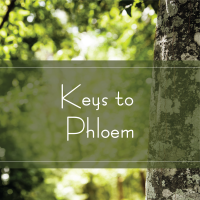 | |
Trees Are Key
We recently looked at how “Glucose is Key” but once solar energy is captured and turned into the chemical form of energy known as sugar, the tree can transport that energy. Join us this week as we explore that pathway in “Keys To Phloem.”
Species Spotlight
In this episode we learn more about a tough, beautiful flowering Texas native tree. Desert Willow, Chilopsis linearis, isn't a willow and is very drought tolerant. |
|  | |
Trees Are Key
This is a great time for us to learn new skills, read books or just take time to think. Have you thought about thinking? Join us this week as we explore the world of thinking about thinking in “Metacognition is Key”.
Species Spotlight
This week's tree is a Texas native that is rare in the wild. American Smoketree, Cotinus obovatus, is often seen as a shrub or small tree and has a unique inflorescence that give it the common name smoketree. Listen to this episode to learn more about this fun tree. |
|  | |
Trees Are Key
Join us this week as we look closer at one of the products of the photosynthesis process and what it means to our trees. That’s this week in “Glucose is Key”.
Species Spotlight
Listen to this episode to learn more about a Texas native tree that produces food for wildlife and tough, beautiful wood. Juglans microcarpa is also known as Texas walnut and is a tree worth knowing. |
|  | |
Trees Are Key
Join us this week as we explore a visual symptom that may indicate your tree is in trouble in “Keys to Chlorosis.”
Species Spotlight
Let's look at an oak tree that can be a great alternative to its more chlorosis-prone cousin, pin oak. Shumard oak, Quercus shumardii, is a beautiful Texas native red oak. Listen to this episode to learn more about this tough tree. |
|  | |
Our 5 Senses Are Key with Cindy Scott
Join us as we continue our conversation with Cindy Scott with a virtual guided forest therapy session that you can use in your own backyard, local park, or state or national forest.
That’s this week on “Our 5 Senses Are Key.” |
| .png) | |
Keys to Forest Therapy with Cindy Scott
This week we are joined by a guest to help us take another look at how Trees Are Key to human health. The connection between trees, people, and health is an exciting subject, and we hope you can join us as we explore more in "Keys To Forest Therapy with Cindy Scott."
Resources:
Association of Nature and Forest Therapy www.natureandforesttherapy.org/ |
| 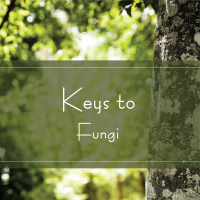 | |
Trees Are Key
This episode, we take a closer look at another microorganism that can be an ally or enemy when it comes to growing trees.
Species Spotlight
From West Texas last week to East Texas this week, Texas trees are as diverse as our landscape. Listen to this week's #TreesAreKey to learn more about cherrybark oak, Quercus pagoda. |
| 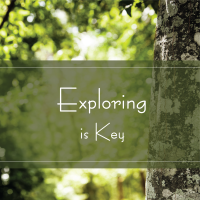 | |
Trees Are Key
Listen to this episode to discuss why it's important to explore. We can explore new skills, hobbies, or even our own backyard. This is particularly important for our kids' mental and physical health. Learn more in "Exploring is Key."
Species Spotlight
Let's explore West Texas by learning more about a lesser known, native Texas oak. Emory Oak, Quercus emoryi, can be found along moist canyons and slopes above 4,000 feet in the Davis, Chinati, and Chisos mountain ranges. |
|  | |
Trees Are Key
Join us for the final episode of the 5th season of #TreesAreKey. Yes, it’s episode 260. Never would have imagined that we would still be chugging along five years later. You’re all still listening, so we will keep producing. For our final episode this season, we’re going to do something a little bit different. Join us for “Sound Is Key.”
Species Spotlight
This week's tree isn't botanically a tree, but it is treated and managed as one. Texas sabal palm, Sabal mexicana, is a tough, well-adapted Texas native that is one of the cold hardiest palms you can grow here. |
|  | |
Trees Are Key
We’re in the midst of a trying time for our country and the world. Just getting out of the house and saying hi to your neighbors can feel great and help you cope with stress. Join us this week as we look at some ways that “Outside Is Key.”
Species Spotlight
This week's tree can go by several names, but one of the most common give it a bad rap. Fall elm, aka cedar elm, or Ulmus crassifolia, has been inappropriately linked with "Cedar Fever" during tree adoption events. |
|  | |
Trees Are Key
Take this time to consider how you engage with other people, particularly since we are putting more and more emphasis on ‘virtual’ connections. Join us this week as we explore why “Engagement Is Key.”
Species Spotlight
This week’s tree is rare, but can be found in Texas. It’s more commonly expected in the Rocky Mountains. Listen to learn more about quaking aspen, Populus tremuloides. |
|  | |
Trees Are Key
It’s a concerning time in many ways, but as always we strive to utilize science to inform the art of arboriculture and forestry. Join us this week as we discuss why “Science is Key.”
Species Spotlight
This week’s tree is a Texas native that goes by many names but can be tough to find in your local nursery or garden center. Call it Eastern Hophornbeam, ironwood, or Ostrya virginiana—this tree is one tough customer. |
|  | |
Trees Are Key
A tree that grows up straight and tall is, generally, remarkably stable. Add a lean to that same tree and it’s ability to stand up is compromised…but how much? This week we’ll discuss "Keys to Measuring Leans."
Species Spotlight
This week’s tree will soon be blooming across much of Texas. Mexican-Buckeye, Ungnadia speciose, is a tough Texas native that also supports our pollinators. |
|  | |
Trees Are Key
Let's talk about "Keys to Anthracnose." We are already seeing symptoms of anthracnose on new leaves around Arizona ash in the Austin area. Is this something we should be concerned about?
Species Spotlight
The Rio Grande Ash or Mexican Ash, Fraxinus berlandieriana, is a deciduous Texas native. This species is a medium-sized tree to 40 feet tall and a trunk to 2 feet in diameter. |
|  | |
Trees Are Key
Let’s discuss how "Pattern of Mortality is Key" to diagnosing trees. Quoting from Dr. Appel at Texas A&M University, “Pattern of Mortality in time and space within the population of trees and patterns of mortality in time and space for individual trees’ are vital to distinguish between problems."
Species Spotlight
The Southern live Oak, Quercus virginiana, has a wide range across the southeastern United States, as far north as Virginia and west to Texas. |
| .png) | |
Trees Are Key
Let’s discuss “Keys To Fireblight.” Forest and tree health has been a big topic lately. Let’s look at another common challenge for many of our fruit trees.
Species Spotlight
Callery Pear, Pyrus calleryana is also known as ornamental pear. This is a common small landscape tree that grows up to 20 feet tall with a trunk to 10" in diameter. It has a dense, oval, symmetrical crown. |
|  | |
Trees are Key
It’s amazing how a concept you put on a topic list months ago can come together with training you received last week, a television show you are watching with your spouse, and a development book you are listening to. Let's talk about why "Pain is Key."
Species Spotlight
Black Locust, Robinia pseudoacacia, is a deciduous medium-sized tree of farms and old homesteads, to 50 feet tall and a trunk to 2 feet in diameter. |
| 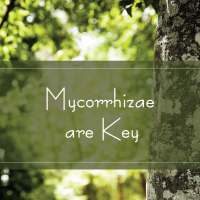 | |
Trees Are Key
let’s discuss why “Mycorrhizae Are Key.” There are detrimental fungi that we’ve talked about, like the causal organisms of oak wilt and Dutch elm disease, but there are many innocuous or helpful fungus that we should try to aid or at least not hinder them.
Species Spotlight
The Carolina Cherry-Laurel, Prunus caroliniana, is a firewise, native small or medium-sized evergreen tree that can grow up to 40 feet tall with a trunk up to 18" in diameter. |
|  | |
Trees Are Key
Whether it’s the drive to be the first to ‘invent’ a commercially viable light bulb or to be the the first country to reach the moon, "Competition is Key." Let's talk more about competition on this week's episode of #TreesAreKey!
Species Spotlight
The Tallowtree, Triadica sebifera, is also called Chinese Tallow. Native of Japan and China, tallowtree is now found in yards, pastures, fence rows, and other unmaintained areas throughout coastal and southeast Texas. |
| 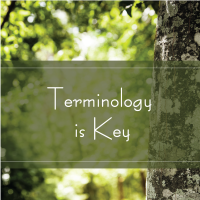 | |
Trees Are Key
Let’s discuss how “Terminology is Key.” Words have meaning and, in many cases, more than one meaning. Add to that our different industries, and oh my, it’s tough for consumers and people outside your field to know what you are talking about.
Species Spotlight
The Texas Madrone aka Arbutus xalapensis aka Madrono is an evergreen Texas native. This striking small tree grows up to 30 feet tall, often with twisted, multiple trunks up to 12 inches in diameter or more with a broad, rounded crown. |
|  | |
Trees Are Key
Did you plant your trees in the fall? If not, now is the second best time to plant. In much of the south it is still prime planting season and the spring flush of root growth will happen soon. Not only do you need to think about what genus and species you want to plant, but the provenance of the tree’s genetics may matter. Let's explore why “Provenance Is Key.”
Species Spotlight
This week’s tree is one of my favorites and show the role of provenance. Montezuma baldcypress, Taxodium mucronatum, is a wonderful, tall, Texas native. There’s one near Oaxaca, Mexico that is over 125 feet tall. Listen to this episode to learn more about this amazing tree. |
|  | |
Trees Are Key
Let’s discuss why “Curiosity is Key." A previous supervisor stressed that ‘why’ is more important that ‘what’ or ‘how’ in motivating people. I’ve come to agree with him, and I think it all comes down to curiosity.
Species Spotlight
The American Holly, Ilex opaca aka Evergreen Holly, is a Texas native. American holly is found on rich, moist soils of bottomland forests in East Texas. |
|  | |
Trees Are Key
Learning styles are a fascinating concept from an educator’s point of view. It seem logical that different people prefer to receive and process information in different ways.
Species Spotlight
A small tree, yaupon holly really comes into its own in the winter when the berries provide one of the few bright spots in our Texas landscape.
|
|  | |
Trees Are Key
Happy New Year! The teens are over and we’re into the roaring '20s. Let’s discuss how “2020 Will Be Key.” 2019 was a time of change and we are going to be able to capitalize on that in 2020.
Species Spotlight
Retama is also known as Jerusalem thorn, Paloverde, Horsebean, and LLuviia [you-vi-a] de Oro. This is one of the challenges of common names - one tree can have many.
|
|  | |
Trees Are Key
Last week we explored “Keys to Angiosperms” and this week let’s discuss “Keys to Reconsider.” Happy Holidays – 2019 has been wonderful. There have been many changes in our industries including new headquarters for ISA and TCIA, new leadership in several of our professional and allied organizations, and I can’t talk about 2019 without mentioning #teamtrees and Arbor Day Foundation. Listen in to take a look back.
|
| 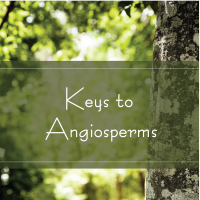 | |
Trees Are Key
We recently discussed the Keys to Gymnosperms and now it’s time to talk about the rest of our trees… angiosperms. They are a more recent evolution and have been very successful.
Species Spotlight
The Anacua Ehretia anacua is also known as Knockaway, a Sandpaper-Tree. This tardily deciduous Texas native is tough. It is a medium-sized tree to 50 feet tall with a dense, round crown of dark green foliage.
|
| 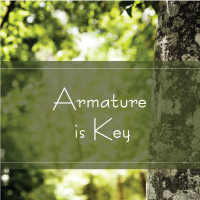
| |
Trees Are Key
Do you know the difference between spines, thorns, and prickles? It’s primarily based on the tissue source that develops into the plants weapon. It may not be key for most homeowners to know the difference, but this can be vital for tree identification.
Species Spotlight
Bluewood, Condalia hookeri, is also known as bluewood condalia or brasil. This tough, Texas native is a small tree or large thorny shrub, often forming thickets.
|
| 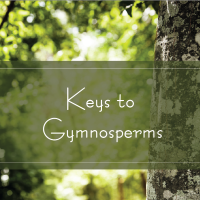
| |
Trees Are Key
It's the time of year when many of us celebrate with evergreens. Whether that is a fresh Christmas tree, an evergreen wreath, or garland, let’s thank the gymnosperms. Do you know the difference between gymnosperms and angiosperms?
Species Spotlight
This week's Species Spotlight features the Virginia pine. More than 100,000 Texas-grown Christmas trees were sold last year, according to the Texas Christmas Tree Growers Association.
|
| 
| |
Trees Are Key
Let’s discuss how “Gratitude is Key.” During this season of thanksgiving and as we approach the end of a decade, let’s look at the science of gratitude and how it contributes to our health so we can better care for our trees and forests.
Species Spotlight
The Post Oak Quercus stellata is a Texas native deciduous tree may be the least susceptible to oak wilt – unfortunately it is hard to propagate and transplant.
|
| 
| |
Trees Are Key
Let’s discuss “Keys to Slime Flux." Slime flux is known by several other names, including bacterial wetwood and there are several bacteria that have been associated with the phenomenon including Enterobactor and Erwinia. It is primarily a nuisance.
Species Spotlight
Red mulberry, Morus rubra, is a native Texas tree species that is known for its delicious berries and unique leaf shapes. In Texas, this species grows as far West as Del Rio, stretching south to Corpus Christi, and north to Wichita Falls and all across the Eastern Texas area.
|
| 
| |
Trees Are Key
Welcome to Episode 238! This week, let’s discuss how “Buy-in is Key.” I just saw an update that #teamtrees has reach 15 million trees in just three weeks. This is a great example of how buy-in turns ideas into reality. Species Spotlight
The American Hornbeam Carpinus caroliniana is also known as blue beech and musclewood. This deciduous Texas native is a slow growing, small to medium-sized forest tree. |
| 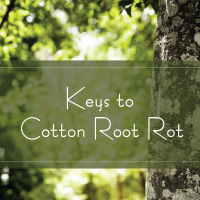 | |
Trees Are Key
Welcome to Episode 237. Last week we explored how “#TeamTrees is Key” and this week we let’s discuss “Keys to Cotton Root Rot”. This week’s focus is a silent killer affecting over 2000 species that goes by several aliases. Let’s delve a little deeper and take a close look as this small, but deadly microorganism. Species Spotlight
The Texas Ebony, Ebenopsis ebano, aka Ebony Blackbead, or Ebano, or Ebony Apes-Earring is a famous tree of Texas. The border town of Los Ebanos, Texas, is named for the ebony tree that serves as an anchor for the last hand-pulled ferry across the Rio Grande. |
|
.png)
| |
We were going to discuss cotton root rot this week, but there is something going on that I don’t want you to miss, so let’s discuss whether “#TeamTree is Key" today on #TreesAreKey.
The Wright Acacia Acacia greggii var. wrightii also known as Wright Catclaw and Una-De-Gato is a semi-evergreen Texas Native. This small tree rarely reaches a height of 30 feet or a trunk up to 12" in diameter. |
|
.png)
| |
Let’s discuss how “Bacteria are Key.” We tend to focus on the negative or harmful microbes like bacterial leaf scorch, slime flux, which we will discuss in a future episode, or hypoxylon canker, but we rarely consider the benign or beneficial microbes.
Species Spotlight
Hawthorn - Crataegus spp. is a deciduous Texas native. We use the word species following the genus when we are talking about multiple species. A Variety Of Common Names Often Ending In "Haw" – are used for the individual Hawthorn species. |
|

| |
Trees Are Key
We are a highly specialized society and most people focus in on one or two areas. In many ways, we’ve (as an industry) failed to educate the general public enough about the value of our trees. From lumber to clean air, trees are amazing… you might even say that trees are key to healthier, happier, safer communities.
Species Spotlight
The Winged Elm Ulmus alata is a Texas native. This medium or large tree grows up to 70 feet tall with a trunk up to 2 feet in diameter, with an open, somewhat vase-shaped crown, and graceful, pendant branches. |
|
.png)
| |
Trees Are Key
FOMO, or the fear of missing out, has entered many people's lexicon, but do you really know what it means? Do you suffer from FOMO? Is there a way to harness FOMO for good? Listen in to learn more.
Species Spotlight
In Texas, the native Rocky Mountain Douglas-Fir reaches heights of 80 feet or more and a trunk diameters to 3 feet, with a dense, conical crown of blue-green foliage. |
|

| |
Trees Are Key
Trees and humans are reactive organisms. While stress is key for the development of strong, resilient trees, it can be debilitating for us. Learning to cope with stress is a vital life skill for all of us.
Species Spotlight
Black Cherry Prunus serotina var. serotina is a deciduous Texas native. This large tree grows up to 80 feet tall with a trunk 1 to 3 feet in diameter. Forest-grown trees have long clear trunks with little taper and an oval crown; open-grown trees have short trunks with many branches and an irregular, spreading crown. |
|

| |
Let’s discuss how “Stress is Key.” Trees are reactive organisms and much of what we should and shouldn’t do to trees is because of stress. From episode 47 “Tropisms Are Key” to all the pests we’ve talked about to drought and heat… our trees are constantly responding to stress.
Species Spotlight
Waxmyrtle Morella cerifera is also known as Southern Bayberry.
This evergreen Texas native is a small, multi-trunked tree to 20 feet tall and a trunk to 6" in diameter, with an open crown of light green foliage. |
|

| |
Trees Are Key
Have you ever been part of a listening session? It’s fascinating just how hard it is to just sit there and listen, but “Listening is Key” to effective communication and can help us avoid many problems.
Species Spotlight
Sassafras, Sassafras albidum, is a deciduous, Texas native, medium-sized tree. This species is usually 40 feet tall and a trunk up to 16" in diameter, occasionally larger, with a narrow crown of horizontal branches with upturned twigs that form an irregular, oblong crown. |
|
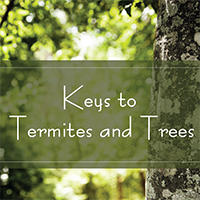
| |
Trees Are Key
Let’s discuss “Keys to Termites and Trees." Are those little critters ants, which we’ve talked about recently, or termites? The very idea of termites eating away at your house is a nightmare. Are they as bad for our trees? It depends…
Species Spotlight
The Sweetgum, Liquidambar styraciflua is also called Red Gum. Sweetgum Occurs in East Texas on rich river bottom soils, in swamps subject to frequent flooding, and dry uplands, as far west as the San Jacinto river basin. |
|

| |
Trees Are Key
Let’s discuss how “Passion is Key.” You commonly hear the advice, “do what you love and you’ll never work a day in your life” I’m lucky, I love what I do, but that doesn’t mean that I don't have set backs when I just want to throw up your hands and walk away. It’s purpose and passion that bring us back for more.
Species Spotlight
The Ginkgo Ginkgo biloba is also known as Maidenhair-Tree. This Deciduous, gymnosperm is Upright, irregular-shaped with an angular branch structure. |
|
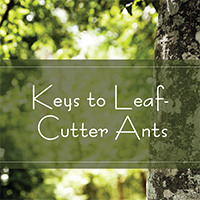
| |
Trees Are Key
Many ants aren’t a problem, but this week’s subject can be very tough on our trees, particularly seedlings and transplants. One challenge is that these ants don’t actually eat the plant material they harvest, but actually farm with it.
Species Spotlight
Shortleaf Pine, Pinus echinata, is a tall, slender Texas native pine reaching a height of about 100 feet and trunk diameters to 2 feet or more, with a rather short, oval crown. |
|

| |
Trees Are Key
Let’s discuss how “Passion is Key.” You commonly hear the advice, “do what you love and you’ll never work a day in your life” I’m lucky, I love what I do, but that doesn’t mean that I don't have set backs when I just want to throw up your hands and walk away. It’s purpose and passion that bring us back for more.
Species Spotlight
The Ginkgo Ginkgo biloba is also known as Maidenhair-Tree. This Deciduous, gymnosperm is Upright, irregular-shaped with an angular branch structure. |
|

| |
Trees Are Key
Many ants aren’t a problem, but this week’s subject can be very tough on our trees, particularly seedlings and transplants. One challenge is that these ants don’t actually eat the plant material they harvest, but actually farm with it.
Species Spotlight
Shortleaf Pine, Pinus echinata, is a tall, slender Texas native pine reaching a height of about 100 feet and trunk diameters to 2 feet or more, with a rather short, oval crown. |
|
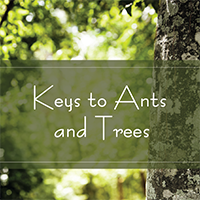
| |
Trees Are Key
Over the years, I’ve been asked about ants and trees many times. The three main culprits seem to be carpenter ants, fire ants, and leaf-cutter ants. In many cases ants may not be a problem and may actually be beneficial… the last one is the exception, leaf-cutter ants can be a major pest for our trees.
Species Spotlight
The Eastern Cottonwood, Populus deltoides ssp. deltoides, is a large Texas native tree up to 100 feet tall with a stout trunk to 6 feet or more in diameter, with thick, heavy branches that form a rounded, spreading crown. |
|

| |
Trees Are Key
When this episode goes ‘live’ I will have taken over as President of the Board of the International Society of Arboriculture. Often, milestones in our life REQUIRE us to reflect. This is one of those times. Listen in as we further explore the role of purpose in our lives and work.
Species Spotlight
The Rocky Mountain Ponderosa Pine Pinus ponderosa var. scopulorum is an Evergreen Texas Native. This large tree, over 100 feet tall (230 feet max.) and a trunk to 3 feet in diameter (8 feet max.), has an open, rounded crown of dark green needles. |
|
.png)
| |
Trees Are Key
Happy Birthday, Smokey Bear! 2019 marks Smokey’s 75th birthday.
I remember a twitter #treechat a few years ago where Smokey made an appearance and the participants were thrilled. He is a great example of what an impact an icon can make.
Species Spotlight
The Mexican Pinyon Pine, Pinus cembroides, is an evergreen Texas native medium-sized pine tree to 40 feet tall and a trunk to 2 feet in diameter, with a dense conical crown of dark green foliage, becoming rounded with age. |
|

| |
Trees Are Key
As a tree care professional, it can be tough to to get a call about a tree that seemed to be doing really well last week, but has turned brown since to the dismay of its owner. One of those commonly ignored culprits, is root disease.
Species Spotlight
The Boxelder Acer negundo, also known as Ashleaf Maple, is a Deciduous Texas native. The only maple with compound leaves, boxelder can attain a height of 50 to 75 feet, with a trunk 2 to 3 feet in diameter, though it is usually smaller. |
| 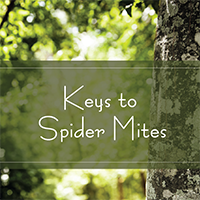 | |
Trees Are Key
It's summer and you see that and the Italian cypress looks a little off, not as green as they should be. Following the hint, you hold a white piece of paper under a few discolored limbs and flick the branches with your finger. A bunch of dark specks land on the paper. You wait a moment and see the dark spots start to scurry around. Bingo! You’ve got spider mites… now what?
Species Spotlight
The Honey locust Gleditsia triacanthos is a deciduous Texas native, a large tree with a trunk diameter of 30" and a height of 80 feet or more. The trunk, branches, and twigs have strong, sharp, brown thorns, either straight or branched, which form on the one-year-old wood and remain for many years. |
| 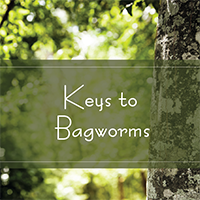 | |
Trees Are Key
The summer is an important time to inspect or monitor your trees. One of the pests you might find this time of year is bagworms – usually they’re just a nuisance, but left unchecked and they can devastate a stressed plant. Listen in to learn more.
Species Spotlight
The Eastern Redcedar Juniperus virginiana var. virginiana is an Evergreen Texas native. A large tree to up to 50 feet tall, the Eastern Redcedar can be found scattered throughout East Texas, north and west to Wichita county and south to Colorado county. |
| 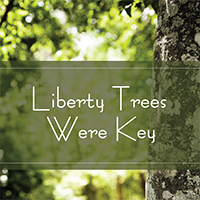 | |
Trees Are Key
We've featured several of our Famous Trees of Texas in our spotlight, but did you know that trees featured in the American Revolution and our quest for independence? Since this episode drops on Independence Day, it just seems fitting to explore Liberty Trees.
Species Spotlight
American elm (Ulmus americana) has a very extensive natural range, from the Western Plains to the Gulf Coast to the Atlantic Northeast. American elm is adaptable to a variety of sites, from uplands to wet bottomlands to harsh urban environments. |
| 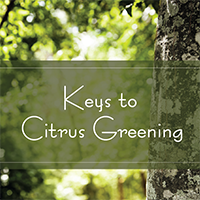 | |
Trees Are Key
Let’s discuss “Keys to Citrus Greening.” One of the amazing things about Texas is the variety of trees that can grow across our amazingly diverse landscape, however that diversity brings forest health challenges. Citrus greening has been confirmed in several locations across the gulf coast, coastal bend and south Texas.
Species Spotlight
The Texas Persimmon Diospyros texana is also known as Chapote or Mexican Persimmon and is a semi-evergreen Texas native. The species has gained favor as a landscape tree from Austin to Houston. |
|  | |
Trees Are Key
Let's discuss "Keys to Cankers." We'll look at a category of damage that can be biotic or abiotic. One of the keys is to not transport citrus trees or plant material from areas of concern (also because of citrus greening). Please don’t bring a lemon, lime, or orange tree back from a visit outside of Texas.
Species Spotlight
The Black Walnut Juglans nigra is also referred to as Eastern Black Walnut. This deciduous Texas Native is a large tree to 100 feet tall and a trunk to 3 feet or more. |
|  | |
Trees Are Key
Let's discuss "Keys to Cankers." We'll look at a category of damage that can be biotic or abiotic. One of the keys is to not transport citrus trees or plant material from areas of concern (also because of citrus greening). Please don’t bring a lemon, lime, or orange tree back from a visit outside of Texas.
Species Spotlight
The Black Walnut Juglans nigra is also referred to as Eastern Black Walnut. This deciduous Texas Native is a large tree to 100 feet tall and a trunk to 3 feet or more. |
|  | |
Trees Are Key
Urban trees and forests face stress on a regular basis, but when disaster strikes, the stress can be extreme and damaging. When trees are resilient, cities and communities are too. Listen in to learn more about how "Resilience is Key."
Species Spotlight
This week's species spotlight features the Gum Bully Sideroxylon lanuginosum is also known as Gum Bumelia, Gum-Elastic, Woolybucket Bumelia. |
|  | |
Trees Are Key
Are you competent? For our urban and community forestry program we use competencies to help drive our program and professional development. Listen in to learn more!
Species Spotlight
Chinkapin Oak Quercus muehlenbergii is a deciduous Texas native medium or large tree reaching a height of 70 feet and a trunk to 3 feet in diameter, with a rounded crown of glossy, green foliage. It is also planted widely as a shade tree suitable for limestone soils. |
|  | |
Trees Are Key
We've talked about it several times, but photosynthesis is key to our trees and ourselves. Listen in as we delve a little deeper into this fascinating, miraculous life process.
Species Spotlight
This week's tree looks a lot like a shumard oak or the often specified pin oak but will perform better in many areas. Nuttall oak, Quercus texana, is a great Texas-native choice. |

| | |
Trees Are Key
Let’s discuss "Keys to Crown Reduction." Crown reduction may be one of the more challenging pruning objectives. Most of this work should be done in the outer canopy of the tree and is a skill. Listen in to learn more!
Species Spotlight
The Blackjack Oak, Quercus marilandica, is less commonly known as Barren Oak, Jack Oak, and Black Oak in Texas. The range of the Blackjack Oak is from East Texas all the way to Central Texas, with a small distinction on the western side. |

| | |
Trees Are Key
Let’s discuss why “Gear is Key.” Arboriculture is an amazing profession. There is room for everyone, those that like to be outside, those that want to hunker down behind a computer, those that like to work with people, those that would rather stick to themselves. All have access to amazing tools or gear.
Species Spotlight
The Lacey Oak, Quercus laceyi, is also known as Blue Oak and Canyon Oak. This Deciduous Texas Native is a medium-sized tree to 40 or more feet tall with a stout trunk up to 2 feet in diameter. |

| | |
Trees Are Key
Let’s discuss “Is Retrenchment Key?” As we’ve talked about before, arboriculture is the art and science of caring for trees. This week’s topic is a perfect example of that principle.
Species Spotlight
The Swamp Chestnut Oak, Quercus michauxii (mih-SHOKES-ee-eye), has also been called Cow Oak and Basket Oak. This deciduous, Texas native is a large forest tree that can reach a height of 100 feet or more and a trunk diameter to 4 feet. |

| | |
Scenarios are Key One of my favorite activities is teaching and skills development. We host regular monthly web-based staff meetings, but those are primarily information sharing. Our program development meetings on the other hand are about developing our program and our competencies. Species Spotlight The Huisache, Acacia farnesiana, is also known as Sweet Acacia or Weesatch is this week's species spotlight. Huisache is Widespread in South Texas, with small populations extending into Brazos and Travis counties. |
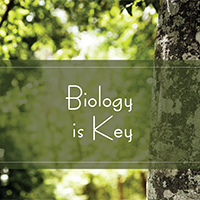
| | |
Biology is Key
I'm looking back at some of my favorite episodes and they have something in common. The commonality also happens to be one of the subjects that I love to teach for our Certified Arborist Prep Courses… Tree biology, in particular, applied tree biology.
Species Spotlight
One of the few deciduous conifers of North America, the baldcypress is a large tree to over 100 feet tall and a straight trunk to 8 feet in diameter, with numerous ascending branches. In swamps they develop distinctive woody growths from the root system called "knees." |
.png)
| | |
Keys to Funding
Let’s talk about “Keys to Funding” and increasing our available resources. We talked about why “Budgets Are Key” a few weeks ago and it’s interesting, you need a budget to talk about funding, but you also need funding to budget.
Species Spotlight
Osage-Orange, Maclura pomifera, is also known as Bois-D'arc, Hedge-Apple is a Deciduous, Texas native that has few pest problems. It is A medium-sized tree to 40 feet tall with a trunk up to 3 feet in diameter, with many crooked, interweaving, thorny branches that form a dense, spreading crown. |
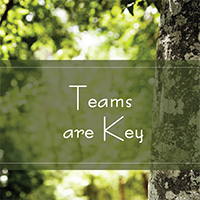
| | |
Teams are Key
Let’s talk about how “Teams Are Key” and how to improve them. One of the keys to the importance of a team is that you can share the burdens and focus on what you do well and you get multiple viewpoints. Team work itself is a competency.
Species Spotlight
This week's Species Spotlight features the Anacahuita, Cordia boissieri aka Mexican-Olive or Wild Olive. This small tree is native to the brushlands and forest remnants of the southernmost tip of Texas down in to Mexico. |

| | |
Budgets are Key
Trees are Key and they make great investments, but you need resources to manage those investments. Join us this week as we explore how “Budgets are Key” and discuss ways that you might be able to improve your budgets.
Species Spotlight
This week’s tree is a fast growing, yet fairly long lived tree for many of us across Texas. This tree has been brought north, but is a great choice in many areas. Listen to this week’s episode to learn more about Mexican sycamore, Platanus Mexicana. |
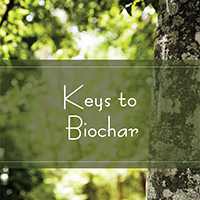
| | |
Keys to Biochar
Let’s talk about “Keys to Biochar.” We are getting the peer-reviewed research to back up the hypothesis that biochar may be a great tool in our kit for growing trees in challenging environments and help sequester carbon at the same time.
Species Spotlight
The White Ash, Fraxinus Americana, is also called Biltmore Ash. Found throughout East Texas, this species grows best on the rich, moist, well-drained soils and slopes adjacent to river bottoms. |
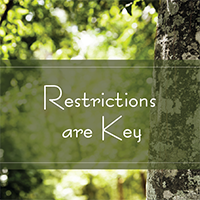
| | |
Restrictions are Key
I recently received an interesting question from a gentleman asking why he couldn’t import pecans or black walnut trees to Texas. We are also dealing with an EAB quarantine in a major Texas metro area for the first time. Join us this week as we explore why “Restrictions Are Key.”
Species Spotlight
This week we will explore a species that is at risk from emerald ash borer. Listen to this episode of #TreesAreKey to learn more about green ash, Fraxinus pennsylvanica. |

| | |
Keys to Galls, Part II
It’s common for us to get questions over the summer and early fall like "What is this weird growth on my trees leaves or twigs?" Once we explain what the growth is, a gall, fungus or chemical, the follow up question is inevitably “What can I do about it?”
Species Spotlight
Sugarberry, Celtis laevigata var. laevigata, aka Sugar Hackberry or Palo Blanco is a deciduous, Texas Native which is commonly confused with Hackberry – Celtis occidentalis, a more northern species. |
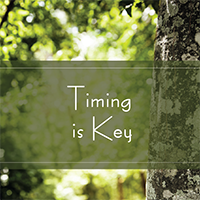
| | |
Timing is Key
You’ve probably heard many people say “Timing is everything." While it may not be everything, “Timing is Key” in arboriculture and forestry. Inspect a tree the day before it would have fallen, and you are a hero, while arriving a day late can be tragic.
Species Spotlight
The Mexican Plum Prunus mexicana is a small Texas native tree that grows to 25 feet tall with a short trunk 8" to 10" in diameter. It has a short, irregular crown of dull green foliage. |

| | |
Drainage is Key
One of the main tenants of tree planting is, "Right Tree, Right Place." This saying means you should match your tree species to the spot you are going to plant.
Species Spotlight
The Eastern Redbud Cercis canadensis var. canadensis is also called Judas-Tree. This deciduous, Texas native is a small or medium-sized tree. |

| | |
Keys to Promotion Let’s Let's look at a few keys to help you promote your product, whether it's a new app, a certification prep course, a ‘new’ trademarked tree, or the community forestry program that cares for your community’s trees.
Species Spotlight
The Texas Mountain-Laurel, Sophora secundiflora, is a small, native, evergreen tree or large shrub. This tree typically grows up to 20 feet tall with one or more trunks up to 8 inches in diameter, with a compact, oval crown of glossy, dark green foliage. |
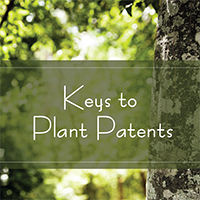
| | |
Keys to Plant Patents Let's talk about “Keys to Plant Patents.” In the last episode, we started exploring the world of subspecies, varieties, and cultivated varieties. This week we will continue that exploration by looking at patented and trademarked trees.
Species Spotlight
"Arctic Frost is the most cold-hardy satsuma hybrid tested so far, having survived temperatures as low as 9 degrees at the Texas A&M Research and Extension Center test site near Overton," said Dr. Brent Pemberton, AgriLife Research horticulturist. |

| | |
Varieties Are Key We talked about planting a lot in our first season, but we didn’t spend much time discussing subspecies, varieties, cutivars, and patented trees. Picking the right species is important, but picking the best variety or cultivar can be just as important.
Species Spotlight
Perhaps the most common small landscape tree or large shrub planted in Texas, crapemyrtle is a deciduous non-native tree which is usually multi-trunked with smooth, muscular limbs. |

| | |
Storytelling is Key Let's talk about why “Storytelling is Key” and how we can better educate others about trees, arboriculture and community forestry through great storytelling.
Species Spotlight: Burgess Oak
In 1915, Richard F. Burges, tree advocate, brought a sapling live oak from California and planted it in his yard in El Paso. With the same commitment he gave to all his causes, Mr. Burges nurtured his live oak to maturity, and the Burges Oak remains a testament to the tenacity of live oaks and early residents of Texas. |
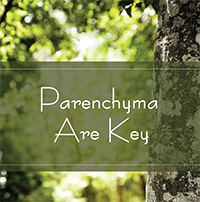
| | |
Parenchyma are Key
Let's talk about why “Parenchyma Are Key." Parenchyma are defined as “thin-walled, living cells essential in photosynthesis, radial transport, energy storage, and production of protective compounds” in the ISA International Dictionary.
Species Spotlight
Deciduous holly, Ilex decidua, is also known as possumhaw is a Texas native large woodland shrub or small, multi-trunked tree that grows to 20 feet tall and stems to 8 inches in diameter.
|
.png)
| | |
Change is Key
Let's talk about how “Change is Key." Heraclitus, Greek philosopher circa 500 BCE, said, "The only thing constant is change." There is great truth in this statement for all of us, but it seems particularly resonant for those of us who work with trees.
Species Spotlight
Typically a large forest or landscape tree, the Southern Magnolia Magnolia grandiflora reaches heights of 90 feet or more with a trunk up to 4 feet in diameter and has a dense pyramidal or oval crown. |
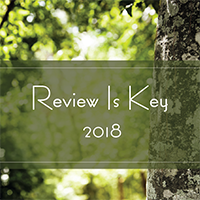
| | |
Review is Key - 2018
We are quickly approaching the end of another year. With a total of over 93,000 listens to our 191 episodes, 2018 has been an amazing year of growth and learning. Join us this week as we look back at 2018 and review a few of the points we’ve covered this year in “Review is Key – 2018.” |
 | | |
Service is Key Last week we discussed how “Compaction is Key” for our
trees, and this week we'll explore how “Service is Key." Whether you chose to work in municipal, commercial, or
utility arboriculture, traditional or urban forestry, or the for-profit or
nonprofit sector, there are many ways to serve society and your industry. Series Spotlight This
week’s Species Spotlight is the Ashe Juniper or Juniperus ashei, also known as
Mountain Cedar. This species is an evergreen Texas native that can grow up to
30 feet tall with a trunk up to 16 inches in diameter. |

| | |
Compaction is Key Soil is Key as we explored in Episode 22, but join us this week as we focus in and discuss why “Compaction Is Key” and what we can do about it. Compaction can be one of the greatest limitations our community trees endure and we can avoid or mitigate it. Listen in to Episode 190 to learn more.
Species Spotlight
The Waxmyrtle Morella cerifera is also known as the Southern Bayberry. This evergreen Texas native is a small, multi-trunked tree that can grow to 20 feet tall with trunks 6 inches in diameter. The tree has an open crown of light green foliage. |
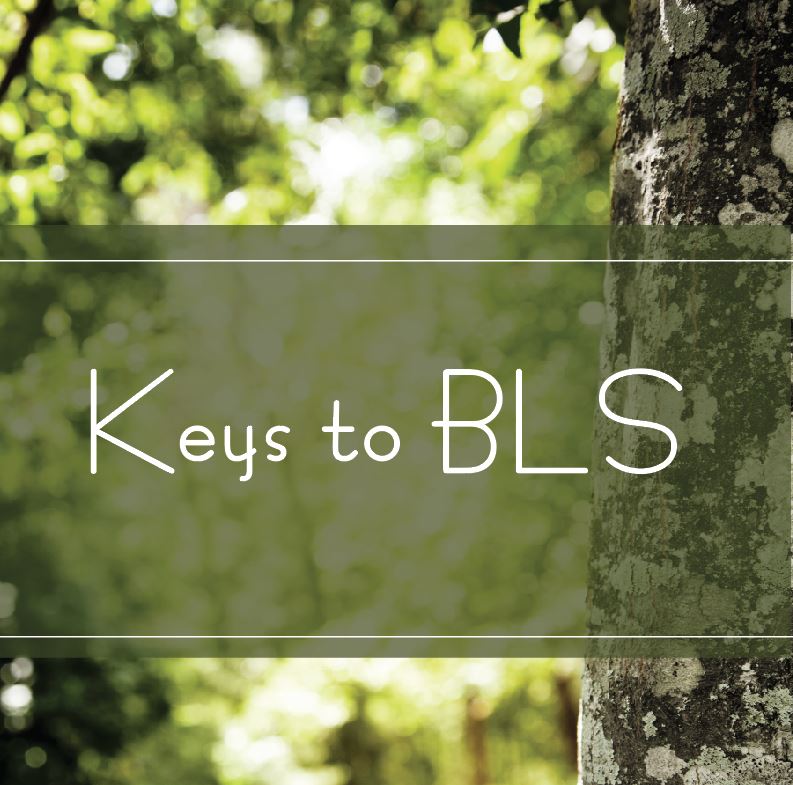
| | |
Keys to BLS Late summer and early fall are great times to spot trees in distress. Heat and drought are common summer stressors that affect trees in different ways. A common culprit may be Bacterial Leaf Scorch, commonly referred to as BLS. Join us as we explore the “Keys to BLS.” Species Spotlight This week's Species Spotlight features the American Smoke Tree. In early development, it's a shrub but left to grow trees can exceed 30-feet in height. The native Cotinus obovatus has small, crowded flower clusters with a smoky appearance. Its leaves turn brilliant in autumn. |
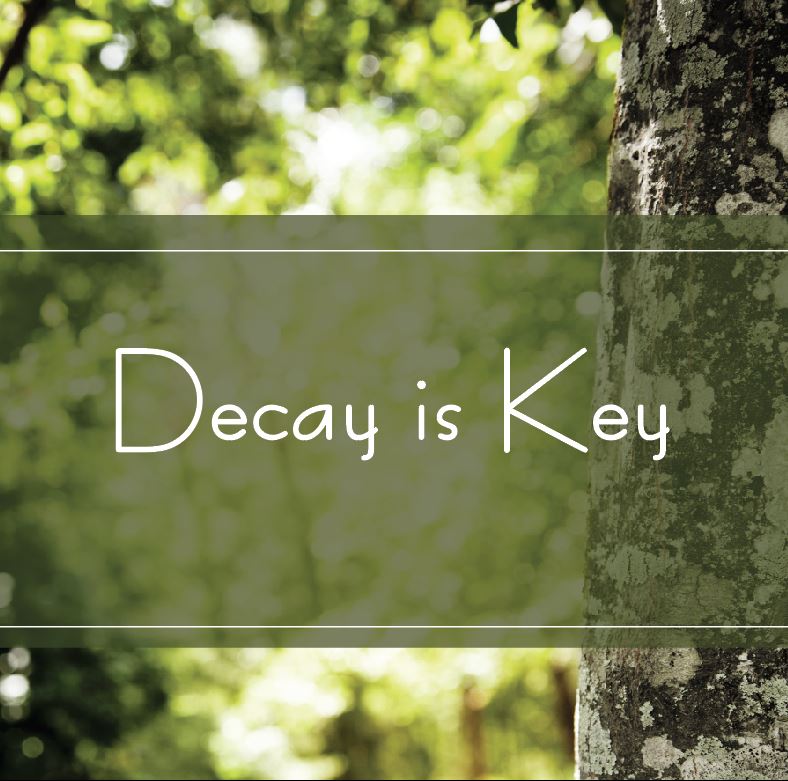
| | |
Decay is Key A storm comes through and knocks over your neighbor’s tree. You close the gate on your fence and the whole thing wobbles. Part of caring for trees and wood products is the management of decay. Join us this week as we explore how “Decay is Key.” Species Spotlight
Join us this week to learn more about a small fruited tree with many names. The Little Walnut (Juglans microcarpa) is a great choice for many areas in Texas. |
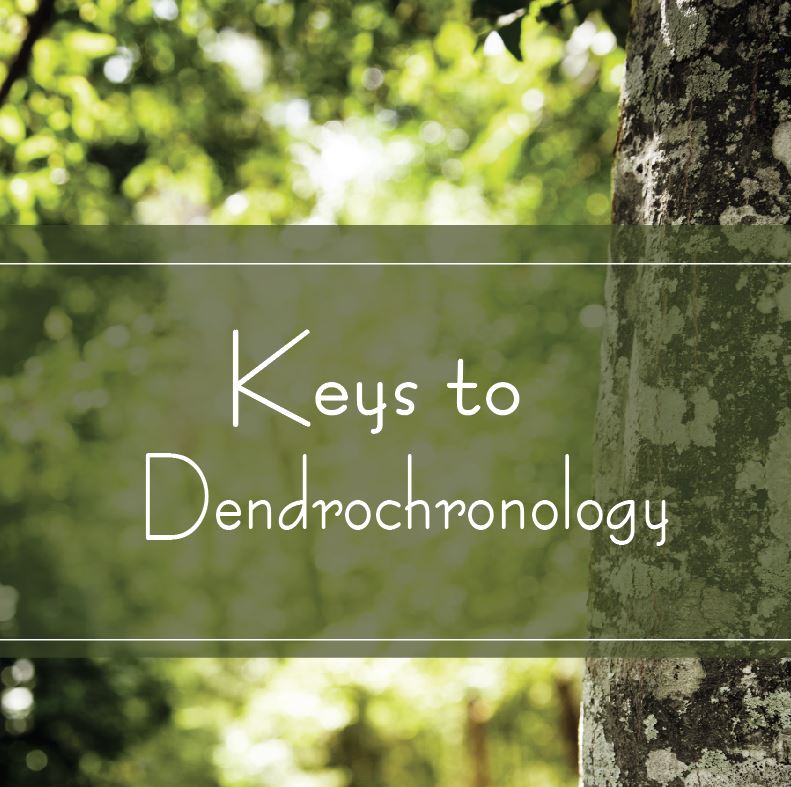
| | |
Keys to Dendrochronology How do we know historic wildfire frequencies, drought cycles and approximately how old a tree is? Listen this week as we explore the fascinating world of Dendrochronology and how we can look at the past to learn more about the present and future. Species Spotlight: Learn about two tree species that have seen a lot of history and can live for thousands of years. Bristlecone pines (Pinus longaeva and Pinus aristata) have been used to figure out more about a Mediterranean volcanic eruption. |
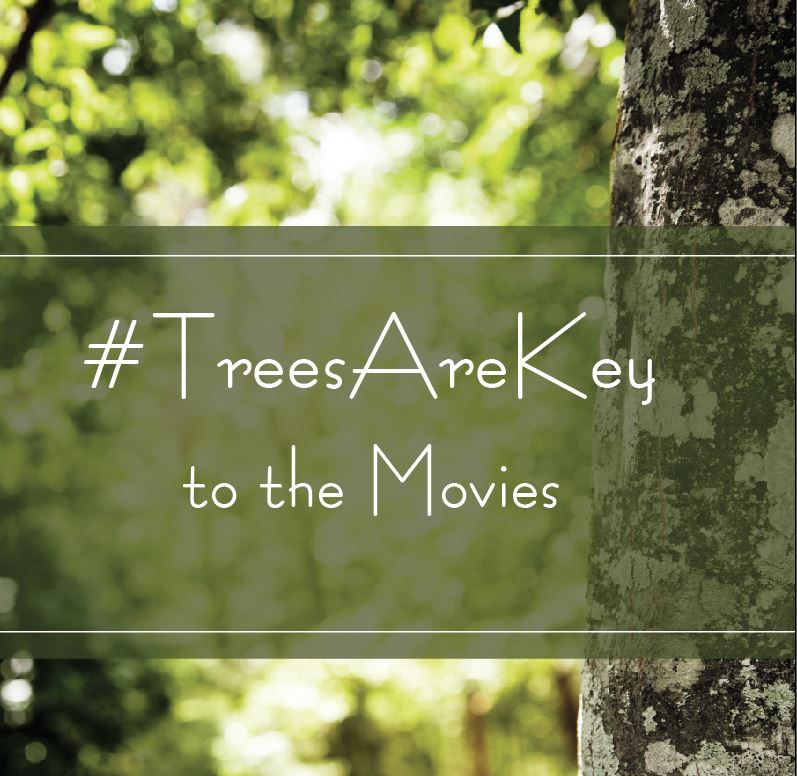 | | |
Trees Are Key to the Movies Let’s look at trees in a different light this week. Lights, Camera, Action! We know that trees are key to place-making and a sense of place can be key to telling a story. Join us this week as we explore how #TreesAreKey to the movies.
Species Spotlight:
This week, let’s travel to the Pacific Northwest to check out a tree with many names that is commonly planted in Texas.Listen and learn more about the Cypress tree.
|
 | | |
Continuing Education is Key It’s common for people in an industry to do things the way they were taught years ago. Unfortunately, our practices often don’t keep up with our knowledge. This is true in tree care. Many times I’ve been told “but that’s how my grandpa did it!” Luckily in tree care we have credentialing programs that require continuing education. Specifically, ISA certification programs require continuing education units. We’ll talk more about how to earn CEUs in a bit. Beyond the obvious of new research and information, why is continuing education key? |
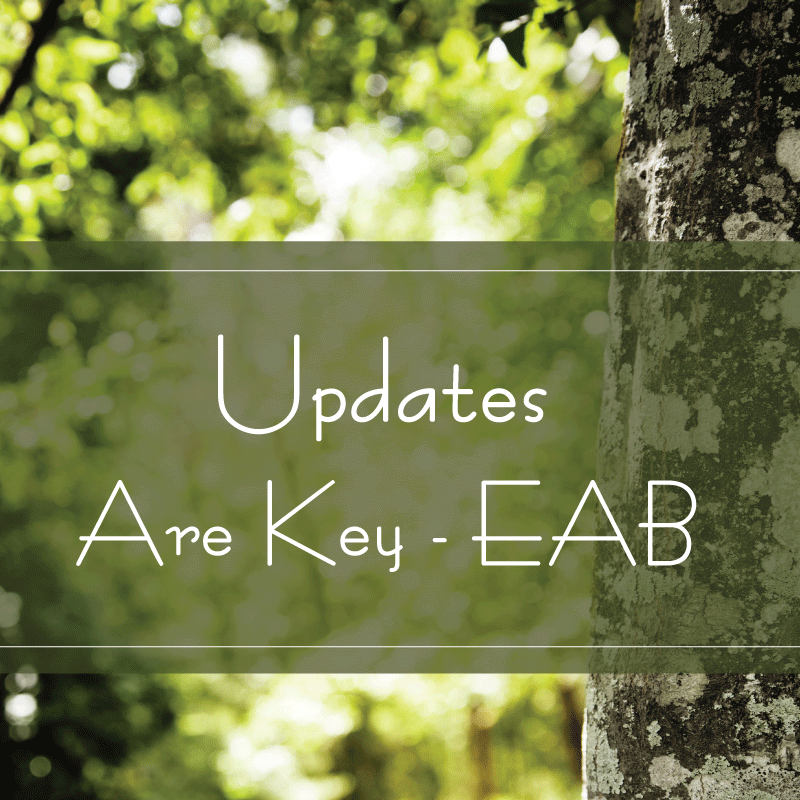 | | |
Updates Are Key- EAB We talked about emerald ash borer back in early 2016, but the nasty little critter continues its march across the country. Join us this week as we talk more about what has happened since we first covered EAB in “Updates Are Key – EAB” Species Spotlight This week’s tree is a South Texas native that will likely be under threat from EAB. Listen this week to learn more about Mexican ash -Fraxinus berlandieriana. |
 | | |
Awareness Is Key There is a disconnect between what trees are worth, how important it is to care for them and that qualified professional like ISA Certified Arborists are best able to help you care for your trees. That’s right, we have a recognition or awareness problem. Join us this week as we talk about how “Awareness Is Key” and try to figure out what can we do about it. Species Spotlight
Bur oak, Quercus macrocarpa, is a wonderful, large shade tree that is well adapted to grow in many areas. It also has a unique, large acorn that can be used by wildlife and humans alike for food.
|
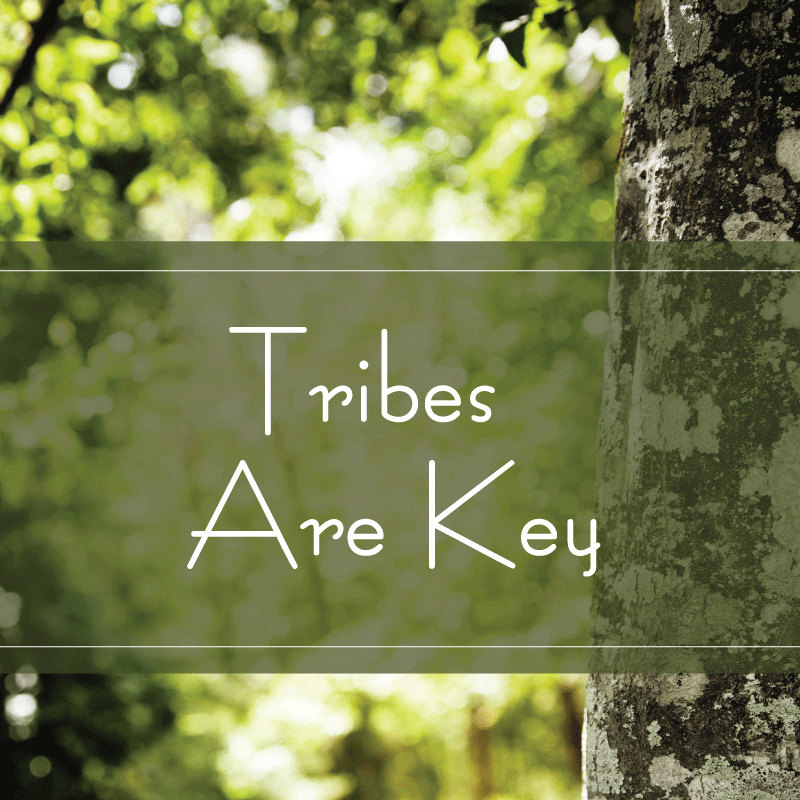 | | |
Tribes Are Key We've talked a lot about collaboration, partners and leadership. Join us this week as we talk about how to find your 'tribe' to collaborate or partner with. A tribe needs a leader and you can't be a leader without a tribe. Listen to this week's #TreesAreKey to learn more. Species Spotlight Listen this week to learn more about live oak, Quercus virginiana, and its cousin the Texas live oak. These tough, resilient trees make a great addition to our community landscapes and have a place in history. |
 | | |
Collaboration Is Key We’ve talked about how "Partners are Key" in episode 56 and how "Volunteers are Key" in episode 107. Partners and volunteers only help if we can collaborate and work together. Join us this week to learn more in “Collaboration is Key.” Species Spotlight Mexican white oak, Quercus polymorpha, is a wonderful tree with many names; one of which is Monterrey oak. Listen this week to learn more about this Texas 'native' that was discovered in the 1990s. |
 | | |
Keys to Summer Limb Drop Yes, #TreesAreKey to healthier, happier, safer communities, but there are times when trees can be the culprit. Let’s explore a fascinating phenomenon known as Summer Limb Drop or Sudden Branch Drop. Species Spotlight This week we take a look at Arizona ash, Fraxinus velutina, a beautiful tree found throughout the Southwest. |
 | | |
Keys to Summer Limb Drop Yes, #TreesAreKey to healthier, happier, safer communities, but there are times when trees can be the culprit. Let’s explore a fascinating phenomenon known as Summer Limb Drop or Sudden Branch Drop. Species Spotlight This week we take a look at Arizona ash, Fraxinus velutina, a beautiful tree found throughout the Southwest. |
 | | |
Keys to Zombie Trees Building off our episodes about Urban Forest Strike Teams and the importance of Air – Join us this week to learn more about zombie trees. That’s right, “Zombie Trees” are trees that are basically dead, but they just don’t know it yet. It’s not just floods that can create zombie trees – be sure to listen to learn more about how to spot and protect yourself from these poor trees. Species Spotlight Post oak, Quercus stellata, is a great native oak, but can be sensitive to disturbance from construction and flooding. Listen this week to learn more about the great tree. |
 | | |
Photos Are Key They say “a picture's worth a thousand words”… and that might be even truer now due to social media and the constant battle for attention in our over saturated lives. Taking inspiration from my friend and colleague Paul Ries, join us this week as we talk about how “Photos Are Key” and how to get better photos. Species Spotlight This week's tree is very photogenic. Listen to learn more about Texas madrone, Arbutus xalapensis. This beautiful, colorful tree shines along the hills of its native range. |
.gif) | | |
Urban Forest Strike Teams Are Key June kicks off hurricane season along the gulf and Atlantic. This week has been Urban Forest Strike Team training with representatives from Texas and across the south. We’ve talked about the Strike Team some in the past, but join us this week as we delve a little deeper and explore why you should make sure your community and emergency management coordinator know about our Strike Teams. Species Spotlight Kentucky coffeetree, Gymnocladus dioicus, is a tough tree with dappled shade that makes if perfect for lawns and gardens. This tree also has a unique, large seedpod that was used as a coffee substitute by early pioneers. Listen to this #TreesAreKey podcast to learn more about this interesting tree. |
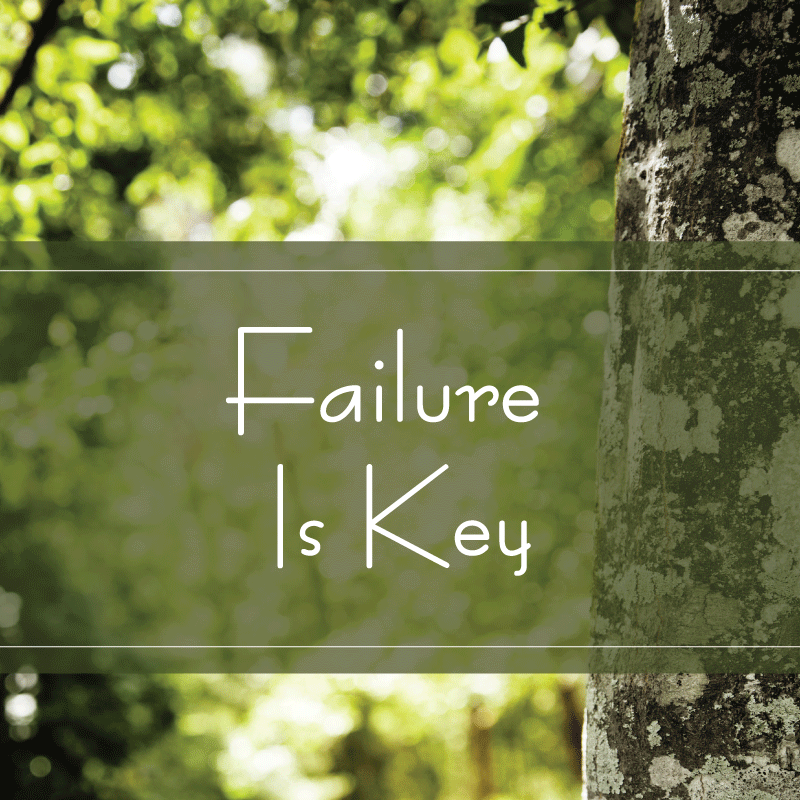 | | |
Failure is Key Did you try something and it didn’t work? Did you try again with the same results? Maybe you tweaked something and tried for the third or fourth time and finally it worked? We’ve talked about tenacity in episode 160, but we haven’t really talked about failure. Often we learn the most (and get the best stories) from our failures. Join us this week as we talk about how “Failure Is Key.” Species Spotlight This week's tree is a failed introduction because it has escaped and become an invasive species across its range. Chinaberry, Melia azedarach, has many characteristics that have made it attractive to the uninformed including thriving in many growing conditions, spring flowers and a bright fall color. Unfortunately, some of those characteristics have also made it invasive in many settings. Listen to this week's #TreesAreKey podcast to learn more. |
.gif) | | |
Keys to Galls We’ve talked about inspecting or monitoring your trees in previous episodes, but you need to know what to look for. We’ve covered subjects like oak wilt, emerald ash borer, defoliators and piercing sucking insects, but we haven’t talked much about abnormal growths. Join us this week as we delve into the subject a little on “Keys to Galls.” Species Spotlight Listen this week to learn more about a beautiful red oak named Shumard, Quercus shumardii. This could be the tree you want for fall color. |
.gif) | | |
Street Trees Are Key Municipal trees are often broken down into two categories, park trees and street trees. Street trees are fascinating because they are often municipally owned, but are often cared for by the residents… that get the majority of their benefits. Join us this week as we explore the world of street trees and why they are key. Species Spotlight Listen this week to learn more about our native arborescent Texas sabal palm, Sabal mexicana. This fairly cold tolerant 'tree' can be a great option in limited rooting areas along our streets or in parking lots. |
.gif) | | |
Keys to Summer Tree Care It was a great spring in Texas and many of our friends up north have finally thawed out. Now that it has started to heat up it’s time to talk about the "Keys to Summer Tree Care." Join us this week as we talk about what to and what NOT to do during the summer months. Species Spotlight Listen to #TreesAreKey this week to learn more about one of our most dependable summer blooming trees. Desert Willow, Chilopsis linearis, is an amazing small tree that can shine in any landscape. |
.gif) | | |
Standards Are Key We’ve talked about a few of our industry standards in previous episodes including episode 2 “Keys to Hiring a Pro”, episode 89 “Safety is Key” and episode 149 “Specifications Are Key.” Join us this week as we explore the world of industry standards and specifically our Z133 safety standard and the A300 series of tree care standards. Species Spotlight
This week's tree is a beautiful blooming tree that is in full glory now, but will continue to bloom all summer. Retama, Parkinsonia aculeata, is also known as Jerusalem thorn. Listen to this week's #TreesAreKey to learn more about this great tree.
|
 | | |
Tenacity Is Key Have you been discouraged by your lack of effectiveness; the seeming ignorance of your clients, customers, leaders or colleagues; the continued improper tree care you see across the street or at the local park? It can be tough to keep fighting the good fight, but we can't give up. We can learn a lot from our trees. Join us this week as we look at how we can work together to bolster our efforts and support each other. Species Spotlight Ginkgo, Ginkgo biloba, is a great example of tenacity and is considered a living fossil. Listen to this episode of #TreesAreKey to learn more about this amazing species. |
 | | |
Parks Are Key There seems to be a day for everything... National Super Hero's Day, National Adopt a Shelter Pet Day, there's even a National Bugs Bunny Day... but recently we celebrated National Park Rx Day. Join us this week as we talk about how and why "Parks Are Key." Species Spotlight Want a fast growing tree that can make a quick impact in your parking lot? Listen this week to learn about Tepeguaje, Leucaena pulverulenta, which is also known as Great lead tree. This tree has the ability to improve the soil in its environment. |
 | | |
Keys to Fire Recovery Fire may be key, but it can also be damaging. Join us this week to learn more about how to care for trees and landscapes after a fire. Species Spotlight Osage orange, Maclura pomifera, is a tough and resilient tree. Listen this week to learn more about it and why it may be less common than it once was. |
.PNG) | | |
History is Key Join us for the first episode of season 4 as we explore a little about Arbor Day and Smokey Bear. There's no
species spotlight this week. |
.gif) | | |
Key Moments From Our First Three Years It’s been three
years since we started #TreeAreKey. We’ve covered a lot of ground in that time.
Join us this week as we look back at some of the key topics we’ve covered
in the first three years including Why Trees Are Key, Keys to
Great Barbecue, and how Trees Are Key to Human Health. This is the last episode of season 3 of Trees Are Key. Next week we will start season 4. There's no
species spotlight this week. |
.gif) | | |
Key Web Apps We’ve talked about native phone apps a few weeks ago, but there are many web apps that can be used for forestry and arboriculture. Join us this week as we explore “Key Web Apps” for forestry and arboriculture. Species Spotlight Listen to #TreesAreKey this week to learn about a fast growing, potentially long lived tree that does well in many areas of Texas. Mexican Sycamore, Platanus mexicana, is an impressive, beautiful large shade tree. |
 | | |
Keys to Prescribed Fire Recently, we talked about how Fire Is Key for trees and forests and that wildfire is often destructive. There are many cases where fire is a valuable management tool. How can we harness the power of fire for good? Join us this week as we discuss the “Keys to Prescribed Fire.” Species Spotlight Eastern redcedar, Juniperus virginiana, is a tough, evergreen Texas native that can come in many different shapes, sizes, and colors. Listen to this week's #TreesAreKey to learn more. |
 | | |
Fire Is Key
Destructive wildfires get lots of attention, rightfully so, but fire is a
natural and important component in many ecosystems. Join us this week as we
explore how “Fire is Key”. Species Spotlight Listen to this week's #TreesAreKey to learn more about a fascinating evergreen Texas native that depends on fire: Longleaf Pine, Pinus palustris |
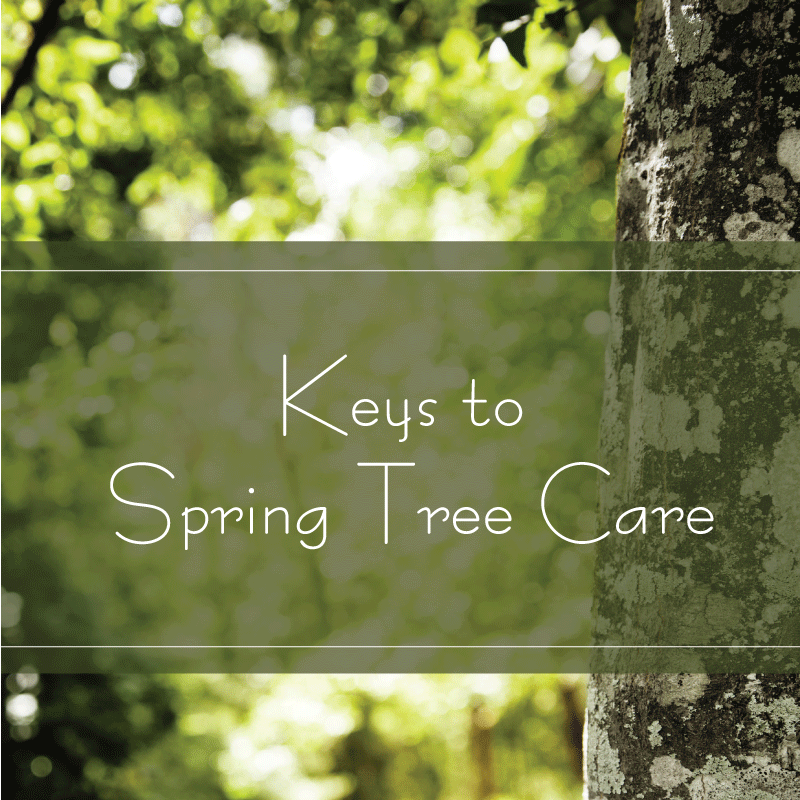 | | |
Keys to Spring Tree Care
The redbuds and plums are in bloom and that means that spring has sprung across
much of Texas. It’s your last chance to plant during prime planting season,
mulch may need to be renewed and there are some trees that you should avoid
pruning this time of year. Join us this week as we talk about the “Keys to
Spring Tree Care” Species Spotlight
Listen this week to learn more about a useful oak. Swamp Chestnut Oak, Quercus
michauxii, is a large beautiful tree native to East Texas. |
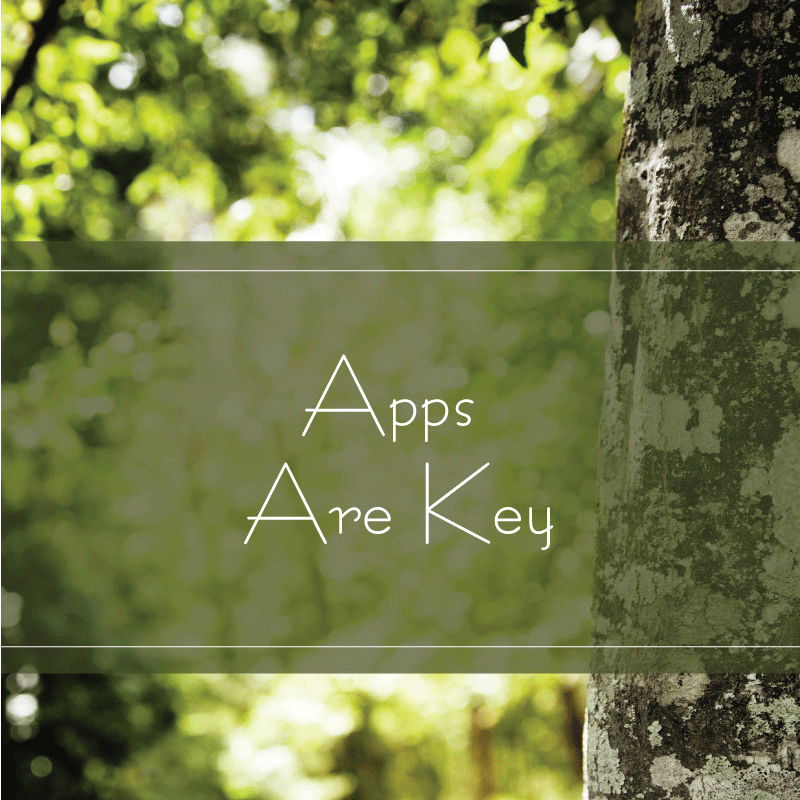 | | |
Apps Are Key It’s an exciting time for trees, forestry and arboriculture and part of it has to do with the increase in available technology. We touched on this a little in episode 115 “The Future is Key” and we’ll talk about other technology in a future podcast, but join us this week as we explore how Apps Are Key. There are some powerful tools you can carry on that computer in your pocket. Species Spotlight Listen this week to learn more about a beautiful, spring blooming trees that may be just right for that hot, dry spot in your yard. Mexican Redbud, Cercis canadensis var. mexicana, is a wonderful small tree. |
 | | |
Specifications Are Key There is a new ANSI A300 Pruning Standard and you should be familiar with the changes. We’ve seen many ordinances, management plans, and requests for proposals state that all work should be done according to ANSI A300 standards… except standards aren’t specifications. It is possible to top a tree and be within A300 standards. Join us this week as we talk about how to create specifications using the standards. That’s this week on Specifications Are Key. Species Spotlight This week's tree is one of my favorites and just coming into bloom across parts of Texas. Eastern redbud, Cercis canadensis var. canadensis, is a beautiful small, spring blooming tree. Listen this week to learn more about it. |
.gif) | | |
Creativity is Key
Last week’s topic is a great example of creativity in tree care. Moving large trees is an art as well as a science and it takes creativity to solve unique challenges. Join us next week as we explore the world of creativity and how it is key to a better future for our trees and forests.
Species Spotlight
This week’s tree is an invasive, exotic tree that shouldn’t be planted, but you should recognize it. Chinese tallow, Triadica sebifera, is common across south and east Texas. Listen to learn more about this and why it was brought to Texas.
|
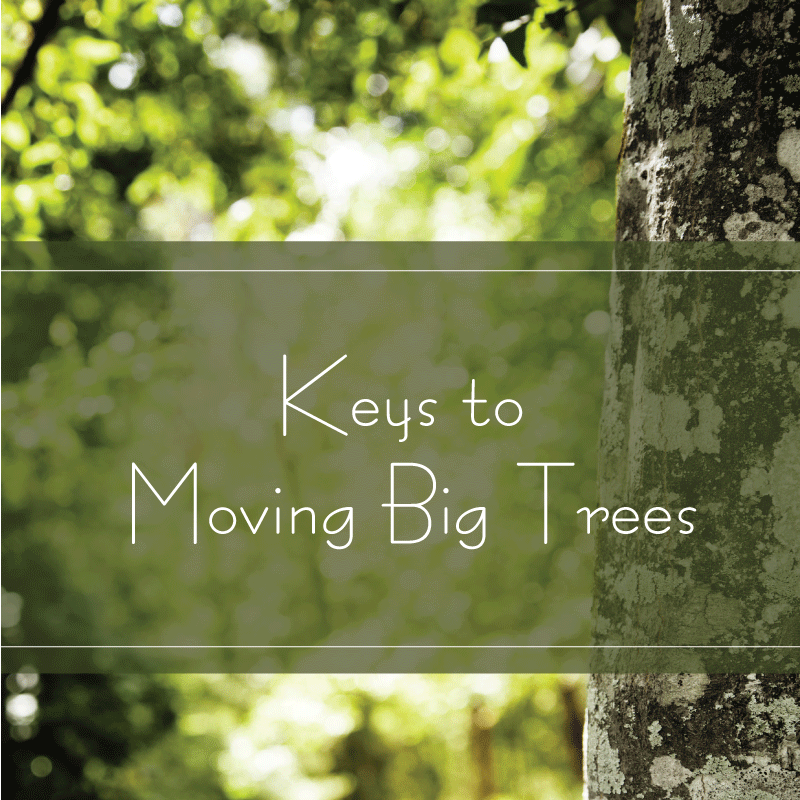 | | |
Keys to Moving Big Trees Sometimes
a tree is in the wrong place… maybe it was planted in the wrong spot, maybe the
road needs to be widened or moved, and sometimes you want an immediate landscape
impact. It is possible to transplant many trees, but there are many steps to
moving big trees. Join us this week for Keys to Moving Big Trees. Tree of The Week - Famous Trees of Texas
edition Listen to this week's #TreesAreKey to learn the
story of the Goliad anaqua. This tree's story is a perfect fit for this week's
topic "Keys to Moving Big Trees" |
 | | |
Advocacy Is Key How do you get what you want and need? We need people to understand why trees are key, why trees need care, and why professionals are best to care for our trees. Many groups that I have worked with that lament about how if they could just better educate the public or the decision makers that life would be better. Others talk about how we need more promotion or public relations about a subject like trees. When it comes down to it we need advocates to help us promote our subject of interest.. in our case trees and forests. Species Spotlight Texas Sophora, Sophora affinis, is a beautiful small tree that can grow well on alkaline soils. Listen to this episode of trees are key to learn more about this elegant tree. |
 | | |
Keys to
Salt Management Last
week we talked about how Winter Care is Key for our trees and covered a little
bit about salts from de-icers, but they aren’t the only way that salts can
cause issues. Over-fertilization, oil and gas exploration and wind along the
coast can all damage our trees with salts. Join us this week as we talk about
Keys to Salt Management. Species
Spotlight Listen
this week to learn more about Japanese Black Pine, Pinus thunbergii, which is
an evergreen, non-native small, sweeping pine. |
.jpg) | | |
Keys to Restoration Pruning
With colder temperatures can come snow and ice. Both of these can cause damage
to our trees. So can wind and errant chainsaws. Luckily, that doesn’t
necessarily mean your tree has to be removed. Join us this week as we talk
about the Keys to Restoration Pruning. Species Spotlight
Listen to this week’s Trees are Key podcast to learn more about an
imported pine tree, Afghan Pine, Pinus eldarica, that lets us extend the range
of pines in Texas. |
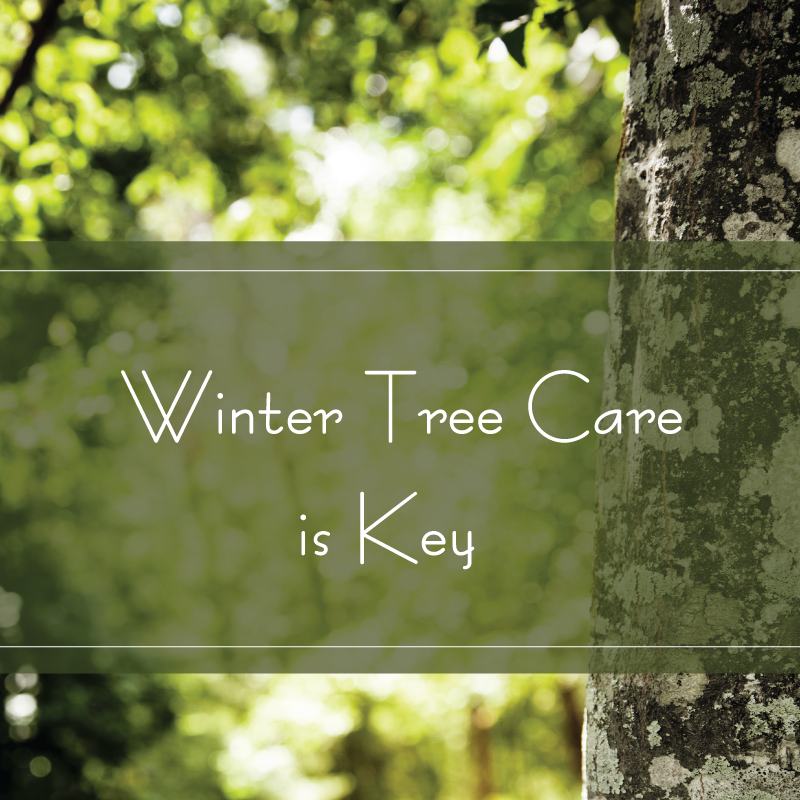 | | |
Winter Tree Care is Key Winter can be a key time for our trees. Planting,
transplanting, pruning and fertilization is just a few common activities this
time of year. Join us next week as we talk about how Winter Tree Care is Key. Species Spotlight The tree diversity in Texas is fascinating. Listen this week
to learn about an edible pine tree that is native to our great state. Mexican
Pinyon Pine, Pinus cembroides. |
 | | |
Keys to Freeze Damage Wow, it finally got cold and will continue to be cold across much of the US. Join us as we discuss the Keys to Freeze Damage. I’ve been moving this topic to the bottom of our topic list waiting for it to be timely. It’s not just how cold it gets, but how quickly it gets cold and how long it stays cold. Join us this week to learn more. Species Spotlight Listen to this episode to learn about a unique small tree that blooms as it's leaves are dropping in the fall, has been used to find water underground, and has potential medicinal properties. This week's spotlight is American witchhazel, Hamamelis virginiana. |
 | | |
Goals Are Key It’s that time of
year. We’ve reviewed 2017 and are looking forward to 2018. Lots of people are
making new year’s resolutions, but goals may be better than resolutions. Join
us this week as we discuss how Goals are Key. Species Spotlight Winged
Sumac, Rhus copallinum, is a small tree or thicket-forming shrub that is important for
wildlife in the winter. Listen to this week's #TreesAreKey to learn more. |
.jpg) | | |
Keys to Mentoring
We are continuing the mini-series this week. Coaching is one avenue for professional development. Another route is mentoring. Mentoring is significantly different from coaching because the relationship is, usually, initiated by the person seeking development, the mentor may not even realize they are mentoring. Join us as we talk about the Keys to Mentoring.
Species Spotlight
This week’s tree goes by many names, but two of them are Sweetbay Magnolia and Magnolia virginiana. The flowers from this tree were once used in the manufacture of several perfumes
|
.gif) | | |
Keys to Great Coaching
We’ve talked about professional development in previous episodes, but what can you do to improve your ability to help others develop? In our next couple of episodes we are going to explore the worlds of coaching and mentoring. We hear a lot about mentor programs, but coaching is just as, if not more, important. Join us this week as we explore the Keys to Great Coaching.
Species
Spotlight Join us this week to learn about the Shagbark hickory, Carya ovata, a great tree with a descriptive name and many edible uses. |
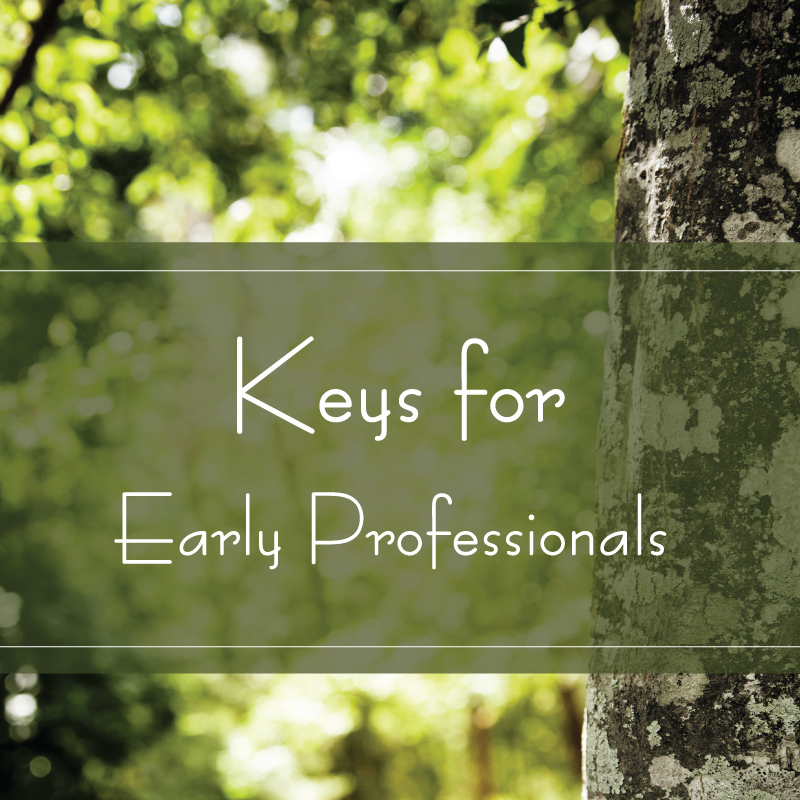 | | |
Keys for Early
Professionals We’ve
talked about the importance of kids and students in episodes 55 and 116
respectively. We also talked about how the future is key in episode 115. I
regularly hear (even during the recent #treechat on twitter) that we need
more focus on educating children on why trees are key and the keys to caring
for trees… but I don’t hear many efforts to retain and develop our
professionals in arboriculture and forestry. Join us this week and we
explore the "Keys to Early Professionals" Species
Spotlight This
week's tree species is armed and has an edible importance. Listen to learn more
about honeylocust, Gleditsia triacanthos. |
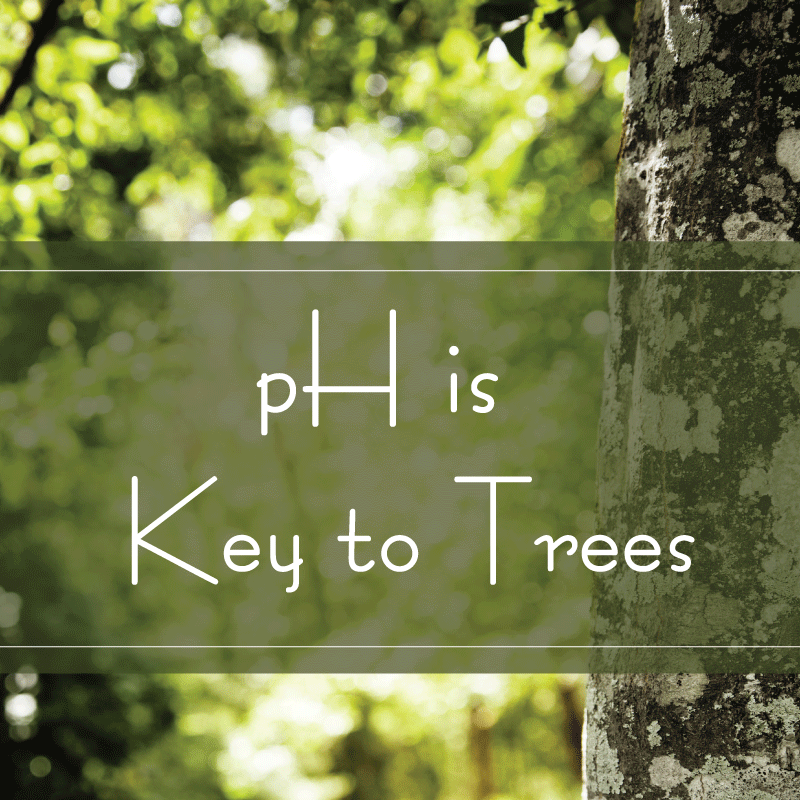 | | |
pH is Key to Trees Join us this week as we focus in on an important aspect of soil. That’s
right – soil pH is key to the success of our trees. We will talk about what pH
is, how it affects our trees and what, if anything, we can do to change it.
That’s this week on Trees Are Key. Species Spotlight
Listen this week to learn more about another oak tree that is often referred to
as pin oak. Water oak, Quercus nigra, is a deciduous, Texas native. |
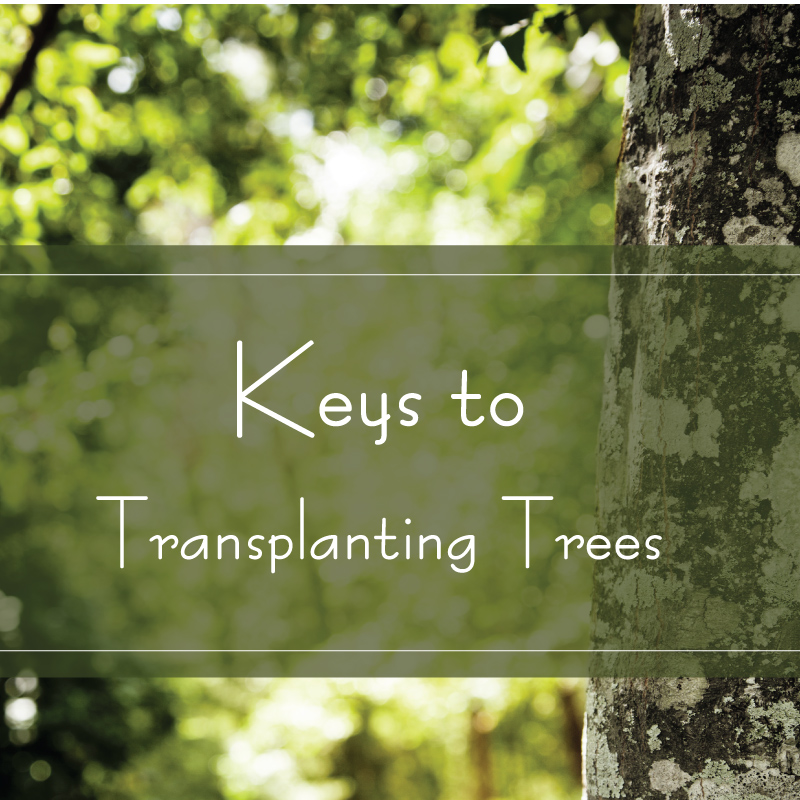 | | |
Keys to Transplanting Trees We are in prime planting season and we are approaching prime
transplanting season. Many people want to save a tree from destruction or just
want to move it to a better location in the yard. It’s not easy, but it is possible.
Join us this week as we talk about the keys to and pitfalls of transplanting
trees. Species Spotlight Join us this week to learn about another Texas native that
is susceptible to emerald ash borer. Texas Ash, Fraxinus texensis, is medium-sized
tree you may not be familiar with. |
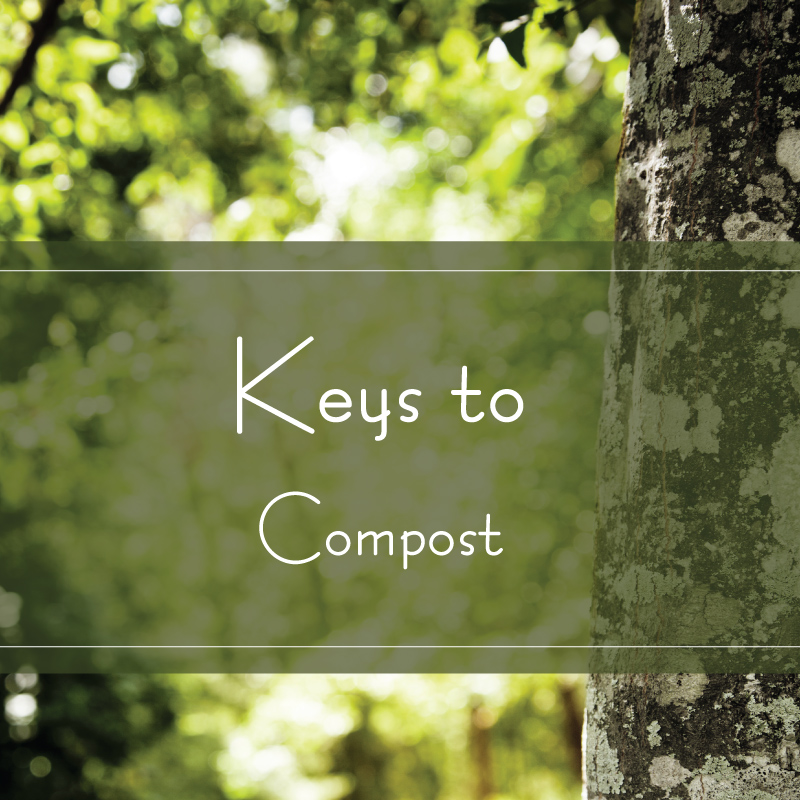 | | |
Keys to Compost It’s that time of year when we tend to have lots
of raw materials to make our own mulch, leaf mold, and compost. We’ve talked about mulch extensively in previous
episodes and we’ve talked about how to make and use leaf mold (an alternative
to compost). Join us this week when we talk about the Keys to Compost and
talk about how to make and use this useful soil amendment. Species Spotlight This week's spotlight is another tree susceptible
to emerald ash borer. Green ash, Fraxinus pennsylvanica, which is also known as red ash. |
 | | |
Ecoregions Are Key We’ve talked about how to select a species for your planting location. We have, also discussed many different species that grow around Texas over the last couple of years, but not every species is a good fit in every area. Tune in as we talk about ecoregions and how they may influence what we should plant. Species Spotlight Listen this week to learn more about one of our native trees that is under threat from emerald ash borer. This week's tree is white ash, Fraxinus Americana. You will even learn how to tell it apart from it's close relative green ash. |
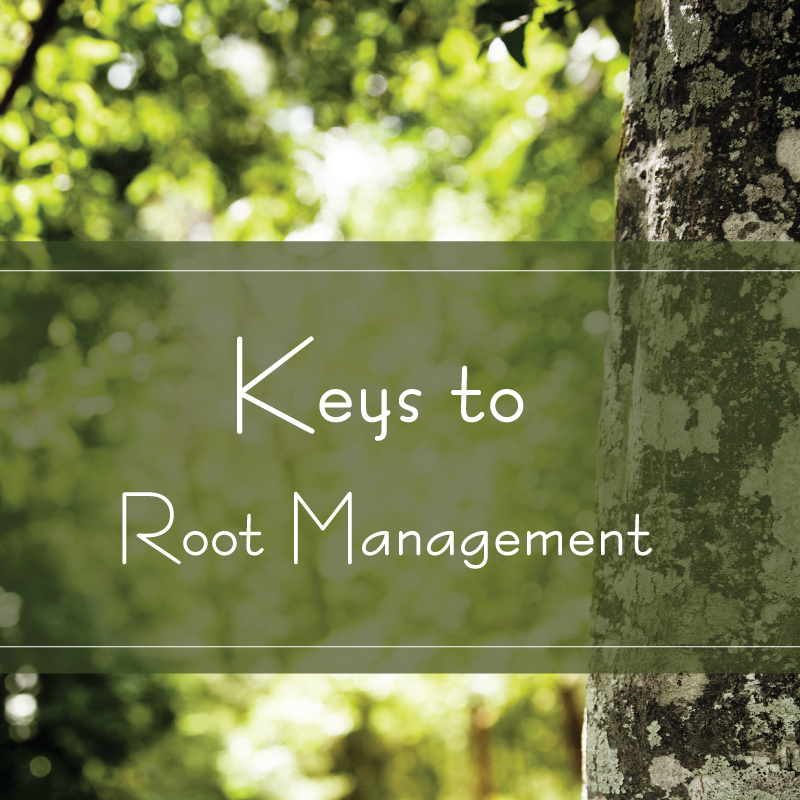 | | |
Keys to Root Management Roots are active this time of year across Texas. That makes
it a good time to plant trees and fertilize established trees if needed. Root management is often overlooked even
though they are the foundation of the tree.
Tune in this week as we discuss the Keys to Root Management. |
.jpg) | | |
Keys to How Many Trees
We’ve talked a lot about choosing the right species, picking the best tree at the nursery, and how to properly plant a tree but we haven’t talked about how many trees we should plant. Join us this week as we start a conversation about the Keys to How Many Trees.
Species Spotlight
Listen to #TreesAreKey this week to learn more about an important tree for birds. Common Hackberry, Celtis occidentalis, grows fast and is a good source of food for our feathered friends. |
.gif) | | |
Keys to Fall Tree Care It has started cooling off in Texas and that means Fall has arrived. Join us this week to learn more about what you should be doing for your trees this season. Species Spotlight Brazilian Bluewood, Condalia hookeri, is a small tree or large shrub that is armed and delicious. Listen to this episode of #TreesAreKey to learn more about this tough Texas native, and why it is called bluewood. |
.gif) | | |
Keys to Educational Impact Education is key to affecting change, yet many of us aren’t great teachers. Join us this week as we explore the keys to maximizing the impact of our educational efforts. Species Spotlight Blackgum, Nyssa sylvatica, is a beautiful tree this time of year. Listen to this week's #TreesAreKey to learn more about this wonderful tree that can add sweetness to your life. |
.gif) | | |
Keys to Fall Webworms Our days are getting shorter and our nights are getting longer. Fall webworms are a common pest this time of year, but rarely warrant treatment this late in the season. Join us this week as the #TreesAreKey podcast discusses these little pests and how to distinguish them from eastern tent caterpillars. Species Spotlight Flameleaf Sumac, Rhus lanceolate, aka Prairie Sumac is a deciduous, Texas native shrub or small tree with a culinary use. Listen to this episode of #TreesAreKey to learn more. |
.gif) | | |
“Keys to Giant Asian Dodder” We haven’t talked about invasive species much, but there is one in the Houston area that is fascinating. Many invasive plants are pioneer species that sprout readily in disturbed areas, others just outgrow native species, but this one is an invasive parasite. Listen to this week’s episode of #TreesAreKey to learn more about giant asian dodder. Species Spotlight – Invasive Edition Chinaberry, Melia azedarach, is a common invasive species across Texas. Listen to this week’s episode to learn how to identify if you have one growing in your yard. |
.gif) | | |
Agility is Key The only constant in life is change. Previously, we have discussed how the future is key (episode 115), and this week we are going to focus on how agility is key. The knowledge that we will have to be nimble and agile as we move into the future is important. Species Spotlight Listen this week to learn more about bluejack oak, Quercus incana, also known as sandjack oak. This oak is often associated with longleaf pine stands in East Texas. |
.gif) | | |
Are Leans Key? Trees can be affected by hurricanes in many ways – defoliation, broken branches, complete failure and suffocation by flooding. One thing we haven’t talked about much are trees whose structural integrity may be compromised, but haven’t fallen down yet. One of the keys we look for are trees that are leaning. Listen this week as we answer the question “Are Leans Key?” Species Spotlight Emory Oak, Quercus emoryi Listen to this week's episode of #TreesAreKey to learn more about a west Texas native with a culinary history. |
.gif) | | |
Keys to Networking Much of our ability to affect change comes from the people we know and the relationships we can develop. Networking is Key to developing a large group of people that you can collaborate or partner with and call upon for help. Join us this week as we talk about the keys to networking and learn a few tips on how to connect with others for the benefit of our trees and forests. Species Spotlight Cherrybark oak, Quercus pagoda, is native to east Texas and has a unique leaf shape and bark texture. Listen to this episode of #TreesAreKey to learn more about this commercially valuable tree. |
.gif) | | |
Keys to Trees and Hurricanes One advantage of a weekly podcast is the ability to cover timely topics and there is currently not a more timely tree topic in Texas than hurricanes. We interrupt our normally scheduled programming to cover a vitally important topic. Often the second wave of destruction for our trees are well-meaning folks with chainsaws. Listen to this episode to learn a few of the keys to dealing with trees and hurricane damage. We have a few other episodes that could help: Episode 2 "Keys to Hiring a Tree Care Pro," episode 6 "Keys to Trees in Floods, episode 12 "The Key to Safe Tree Care (PPE)," episode 44 "Keys to Storm Response," episode 45 "Recovery is Key," episode 54 "Keys to Wind Damage" and episode 89 "Safety is Key." There is no Species Spotlight this week, but be sure to visit our Texas Tree Selector to find trees that are good to plant in your location at texastreeplanting.tamu.edu/index.html Visit our After The Storm resource page for additional information. tfsweb.tamu.edu/afterthestorm/ |
.gif) | | |
Keys to Fighting Heat Islands It is reported that heat kills more people than all other natural disasters. This week, we discuss how trees are key to combating heat islands in our cities. Tune in as we explore a new report from Texas Tree Foundation and learn what you can do to help. Species Spotlight Listen to this week’s podcast to learn more about a potentially invasive tree. Black Locust, Robinia pseudoacacia, is loved by bees and is tough, but may not be a great choice for your yard. |
.gif) | | |
Trees are Key to Human Health Many people know that trees produce oxygen, cool us with their shade and increase property value, but there is ever increasing evidence that trees are key to human health. From decreased risk of skin cancer, to reduced stress, to fewer cardiovascular incidents, trees really are making a difference. Join us this week as we delve deeper into this fascinating subject. Species Spotlight Western Soapberry, Sapindus saponaria var. drummondii, is a Texas native that is often confused with a couple of invasive exotic species. Listen to this week's episode to learn more about this imperiled tree. |
.gif) | | |
Keys to Peeling Bark We get lots of requests to determine what is wrong with specific trees. One area that can be very concerning is problems with the truck and bark of the tree. Join us this week as we discuss the keys to splitting and peeling bark. Species Spotlight Rocky Mountain Juniper, Juniperus scopulorum, is an important tree in West Texas that goes by several names. Tune in to this week’s #TAK podcast to learn more about this useful tree. |
.gif) | | |
Keys to Trees Losing Leaves This time of year it is common for our trees to lose some of or all of their leaves. There can be several reasons for this, some benign and some concerning. Join us this week for Keys to Trees Losing Leaves to learn more. Species Spotlight
Devil’s-Walkingstick, Aralia spinose, is a large shrub or small tree with an intriguing name. Listen to this week's #TreesAreKey to learn more about the well-armed tree.
|
.gif) | | |
Keys to Things Growing On Trees We’ve covered a lot of topics lately that are related to trees, arboriculture and forestry, but let’s focus in on a tree topic this week. Mistletoe, fungal fruiting bodies and lichen are just a few of the many things that can grow on or out of your tree. Listen to #TreesAreKey this week as we talk about the keys to things growing on trees. Species Spotlight Goldenraintree, Koelreuteria paniculata, is a beautiful non-native tree. Their yellow summer flowers really help them stand out during the dog days of summer. Tune in this to this week's #TreesAreKey to learn more about this lovely tree. |
 | | |
Conferences are Key From students and education let us move into one of the best ways to continue your education, conferences. The ISA conference is just around the corner, but it is not the only option. Join us this week as we explore the world of conferences in arboriculture and forestry.
Species Spotlight
Black willow, Salix nigra, is a widespread Texas native. Listen this week to learn more about how to identify this species and ways it can be utilized which include as an indigenous pain reliever.
|
.gif) | | |
Students are Key Last week we talked about the future and this week we’re talking about the future professionals that will care for our trees and forests. Join us this week as we talk about how “Students Are Key” and how we can invest in the future now. Species Spotlight Carolina Buckthorn, Frangula caroliniana Listen this week to learn more about this small tree that provides food for birds and interesting fall color for us.
|
.gif) | | |
The Future Is Key We’ve talked a lot about the concept of time in previous
podcast. Arboriculture is the art of applying the science of trees over time
and learning is all about taking the lessons from the past and applying them to
the now, but what about the future? Our actions now will have an impact of the future and the
future will have an impact on us. Join us this week as we talk about why and how “the future
is key” and how to prepare for it. Species Spotlight Black hickory, Carya Texana, has the western most native
range in Texas, other than pecan. Listen to this week’s #TreesAreKey podcast to
learn more about this Texas native. |
.gif) | | |
Slenderness Ratio is
Key
Pruning is very much an art and science. We seem to get a
little bit more research each year, yet we have a hard time affecting change to
reduce the incidence of topping and the insidious lion’s tailing. “Cleaning” out the interior leaves and branches was somewhat
standard 20 years ago, but we now have research that shows this is a bad
practice. There are a couple of reasons you shouldn’t lion’s tail your trees. Listen
to “Slenderness Ratio is Key” to find out. Species Spotlight Gum Bully, Sideroxylon lanuginosum, is a great Texas
native tree that can be mistaken for live oak. Listen to this week’s #TreesAreKey
podcast to learn more about this cool tree. |
.gif) | | |
Research Is Key I like to define arboriculture as the art of applying the science of tree care over time. Ask two arborist how to do something and you are likely to get at least two answers. This is the art of arboriculture. It’s not as easy as fold along the dotted line, place tab B in slot A and wait for a known result. People have been managing trees as long as there have been people, but we rarely know what the result will be. Luckily for us, we know more about the science of tree care than we did 50, 20 or even 10 years ago. Research is how we expand our knowledge. Join us for “Research Is Key” and get a bonus 'peek' at the ISA Arborist News podcast. |
.gif) | | |
Keys to Ball Moss From kudzu to grape vine, there are many plants that can cause
problems by growing on and over our trees. We are regularly asked if ball moss,
a relative of Spanish moss, is hurting the trees. Join us this week as we
discuss the keys to ball moss. Species spotlight White fringetree, Chionanthus virginicus, is a deciduous
Texas native. While this is a beautiful flowering tree, it can harbor a tree
harming insect, the emerald ash borer. Tune in to learn more about this tree
and why it might not be the best choice for your backyard. |
.gif) | | |
Trees are Key to Energy Savings It’s getting to be that time of year – when we all turn on
our air conditioner. I always hate to turn it on because our electric meter starts
running faster. A few key trees allow us to delay turning on the unit and helps
us keep the use to a minimum. Listen this week to learn how #TAK to energy savings. Species Spotlight With many unique forms and leaf colors, Japanese maple is a
beautiful, but temperamental landscape specimen in Texas. Listen to this
episode of #TAK to learn more. |
.gif) | | |
Is Age Key? One of the toughest questions we’re asked is, “how old do
you think this tree is?” I don’t think many of the questioners want to cut down
their tree to counts its rings, nor do they want to pay for carbon dating. Join us this week as we talk about how to determine a trees’
age and try to determine if age is key. Species Spotlight This week’s tree, Chinkapin Oak (Quercus muehlenbergii),
is a great planting choice for alkaline soils. Not only does it have a uniquely
shaped leaf, but the acorn is edible when roasted. Listen to this episode of
#TreesAreKey to learn more about this cool tree. |
.gif) | | |
Keys to Houston’s Forest Trees are key to healthier, happier, safer communities and
tree inventories and assessments are key to better management. We’ve talked
about the urban forest inventory and assessment program in episode 64 and now we
have a new city in My City’s Trees. Listen this week to learn more about
Houston’s urban forest. Species Spotlight River Birch, Betula nigra This week’s species spotlight is a beautiful tree that
provides visual interest year-round. Listen to learn more about this Texas
native. |
.jpg) | | |
Keys to Municipal Forestry We have spent the last two years talking about
arboriculture, forestry and urban forestry, but this week let’s talk a bit more
about municipal forestry. How can our communities care for and manage our urban
forest? What can and should your
community be doing to help keep us safe and healthy? Species Spotlight Black Walnut, Juglans nigra, can be a tough nut to crack.
This slow growing Texas native has edible fruit, beautiful wood, a natural
herbicide, and it is a slow grower. Listen to this episode of #TreesAreKey to
learn more. |
.gif) | | |
Volunteers
are Key The
impact volunteers can have is amazing. Often they are willing to contribute in
big ways even when they are not being paid. Listen to this episode as we talk
all about how volunteers are key to arboriculture and forestry, how to work
with volunteers and how you can get more involved. Species
Spotlight Longleaf
pine, Pinus palustris, is a beautiful tree that can be key habitat for the red-cockaded
woodpecker. Listen to this episode of #TreesAreKey to learn more about this
fire tolerant southern pine. |
.gif) | | |
Tree Climbing Competitions Are Key We’ve talked about the industrial athletes in arboriculture in episode 8. Join us this week as we discuss the various tree climbing competitions that occur around the world. Not only are these events a venue for competition, but they are also a great learning environment. Species Spotlight This week’s tree is one of my favorites. Montezuma baldcypress, Taxodium mucronatum, can be evergreen, semi-evergreen, or deciduous depending on the growing location. This tough, Texas native should be on your short list for planting in USDA Hardiness Zones 8, 9, and 10. Tune into this episode of #TreesAreKey to learn more about this awesome tree. |
.gif) | | |
Keys to Preserving Trees Drought, soil compaction, chemicals, insects,
disease and flooding. Join us this week as we take many of the lessons
we’ve covered over the last two years and apply them to the challenge of
preserving and protecting trees in an urban environment. Species Spotlight American
Beech Fagus grandifolia is a beautiful Texas native tree. This tree has edible
nuts and an interesting place in history. Listen to this episode of #TreesAreKey
to learn more. |
.gif) | | |
Professional Development Is Key This is the two year anniversary of our #TreesAreKey podcast. Let’s build off last week’s topic and explore our professional development options in arboriculture and forestry. Meetings, webinars, articles, videos, tours, conferences, workshops and credentials can all help you develop appropriate competencies. Listen to this episode of #TreesAreKey to learn why “Professional Development Is Key”. Species Spotlight Nuttall Oak, Quercus texana, is a Texas native that is easily confused with other red oaks. Listen to this episode of #TreesAreKey to learn more about this oak that may have an identity problem. |
.gif) | | |
Podcasts Are Key Personal and professional development are key to improving
our arboriculture and forestry industries. There are many methods for
professional development, but for many of us time is a limiting factor. Audio is a great way to stack professional development with
other activities like walking, exercising and traveling. Listen this week as we
explore the world of tree-based audio podcasts, I even include a podcast I
collaborate on. |
.gif) | | |
Weather is Key Rain, drought, heat and cold are all weather patterns that influence what trees will thrive in your area. We deal with the weather on a day-to-day basis, but our trees are in these conditions all the time. Tune in as we discuss why Weather is Key to our trees. Species spotlight Listen to this episode of #TreesAreKey to find out why American Hornbeam, Carpinus caroliniana, is also known as musclewood. |
.gif) | | |
Nonprofits Are Key We’ve talked about professional organizations as being a great place to learn and practice leadership. From the local tree planting to the international professional organization, nonprofits fill many needs. Listen this week as we explore the world of nonprofit organizations and their role in arboriculture and forestry. Species Spotlight Red Buckeye, Aesculus pavia var. pavia, is a beautiful spring blooming Texas native. Listen to this episode of #TreesAreKey to learn more about this interesting tree that has been used for toothaches, ulcers and as a fish poison. |
.gif) | | |
Leadership Is Key This week marks the 100th episode of #TreesAreKey.
Join us as we discuss the topic of leadership in the realm of trees, forestry and arboriculture. Species Spotlight This week’s species spotlight is a cautionary tale. Ornament
pears, Pyrus calleryana, is a commonly planted tree that is potentially
invasive. Listen to this week’s #TreesAreKey to learn more about this spring
flowering tree. |
.gif) | | |
Will Drones be Key? Trees can be big and one of our challenges in maintaining
our trees is getting close to the area of concern. Climbing a tree to safely
observe these areas can be tough and expensive for the property owner. Fortunately,
a newer technology is coming that may help us take a look. Join us as we
discuss the impact drones will have on arboriculture and forestry. Species Spotlight Wright Acacia, Acacia greggii var. wrightii, is also known
as Wright Catclaw and Una-De-Gato. Listen to this week’s episode of
#TreesAreKey to learn more about this small tree and how it gets its secondary
common names. |
.jpg) | | |
Keys to Tree Appraisal We’ve talked a lot about how trees are key to healthier,
happier, safer, smarter communities. Many people know that trees are important,
but how many know how much a single tree is worth? Join us as we talk about "Keys to Tree Appraisal". Species Spotlight Hawthorns, Cratageous spp Listen to this episode of #TreesAreKey to learn more about
these early spring bloomers that can grow in variety of locations and conditions. |
.gif) | | |
Is Tree Canopy Key? The concept for this podcast is fairly simple - #TreesAreKey
to healthier, happier, safer communities. However, it gets a little more
complicated as we delve deeper into the topics of arboriculture and forestry.
As we talked about in episode 94 “Inventories Are Key”, it’s great to know what
you are managing, but there are other ways to assess community forests. Listen
to this episode where we discuss urban tree canopy assessment. Species Spotlight Hercules'-Club Zanthoxylum clava-herculis aka Prickly Ash These early spring bloomers can grow in a variety of
locations and conditions. Listen to this episode of #TreesAreKey to learn more
about these wonderful trees. |
.gif) | | |
Biomechanics Are Key Trees are fascinating organisms. With the ability to capture
radiant energy and turn it into a chemical energy and to create something solid
out of thin air, trees are truly amazing. Join us for this episode of
#TreesAreKey as we begin exploring the world of tree biomechanics. Species Spotlight Winged Elm, Ulmus alata Do you know how to tell the difference between this Texas
native and its cousin, the Texas fall elm? Listen to this episode to learn more
about a wonderful tree. |
.gif) | | |
Diversity
is Key We
talked about diversity a little bit in episode 24 “Species Selection Is Key”
and in “Inventories Are Key”, but diversity is truly key to a healthy,
resilient community forest. Join us this week as we delve deeper into this
fascinating topic. Species
Spotlight Mexican
plum, Prunus Mexicana, is a visual
treat this time of year. Often one of the first to bloom, Mexican plum is a
harbinger of spring and makes a delicious jelly in the summer. Listen to this
episode of #TreesAreKey to learn more about this drought tolerant species. |
.gif) | | |
Inventories Are Key It is easier and more efficient to care for something if you
know what you are dealing with. This can be as simple as identifying the tree
in your backyard (episode 9, Keys to Tree ID) or as complex as knowing where
all the ash trees are in your community. Join us this week as we talk about why
inventories are key. Species Spotlight Blackjack Oak, Quercus marilandica, goes by many
names, yet it is unlikely you will find one in your local nursery or garden center.
This tree is an important component of many Texas woodlands and forests. Listen
to this episode of #TreesAreKey to learn more. |
.gif) | | |
Trees are Key to Wildlife In the past we have talked about possible animal damage to
trees. Tune in this week as we discuss the importance of trees for wildlife. Species Spotlight Red mulberry, Morus rubra, is an important wildlife species
that can also provide us with a tasty treat. Listen to this episode of
#TreesAreKey to learn more. |
.gif) | | |
Costs Are Key Tree care can be costly, but it isn’t difficult to find an estimate
for care. Just follow the recommendations found in episode 2, Keys to Hiring a
Tree Care Professional, and solicit three qualified, credentialed arborists to
bid on the work. However, many people do not realize there are often indirect
costs in maintaining your tree. Listen to this episode of #TreesAreKey to learn
more. Species Spotlight - Rocky Mountain Douglas-Fir Pseudotsuga
menziesii var. glauca This week’s species is not a great choice for most yards,
but is a great example of the diversity of our native Texas trees. There’s even
a bit of a mystery associated with this tree. Tune in to the latest #TAK to
learn more. |
.gif) | | |
Keys to Being Social For Trees One of the biggest challenges our #industree faces is obscurity. Many people know what a landscape architect is, but have no idea what the responsibilities are for an arborist or urban forester. Listen this week as we talk about Keys to Being Social for Trees. Social media is a great tool for reaching more people and helping them understand the importance of trees and caring for them. Species Spotlight - Arizona Cypress Cupressus arizonica ssp. arizonica This week’s tree is a large evergreen that will add interest and habitat to your yard year-round. It would even make a great living Christmas tree. Listen to this week’s #TreesAreKey to learn more. |
.gif) | | |
Keys to Professionalism Arboriculture and forestry are wonderful careers, but it can
be a struggle to be economically valued. One thing we can do to help with this
concern is to increase our professionalism. Listen to this episode of Trees Are
Key to learn the Keys to Professionalism. Species Spotlight Deciduous holly, Ilex decidua, is a wonderful large shrub or
small tree that has great winter interest. Listen to this episode to learn
about this holly that drops its leaves for the winter. |
.gif) | | |
Safety Is Key Many people do not realize that caring for trees can be
dangerous. Every year amateurs and professionals are injured or die working on
trees. Join us this week to learn more about how Safety is Key. Species Spotlight – Ponderosa Pine, Pinus ponderosa var. scopulorum
can be a large Texas evergreen. Listen to this episode to learn more about this
tree that can smell like citrus and vanilla. |
.gif) | | |
It has been an amazing year for the #TreesareKey podcast. Thanks
to our loyal listeners we have hit over 17,000 listens. Tune in to this week’s
episode for a review of some of the best discussions of 2016. |
.gif) | | |
Keys to Mistletoe Did you know that you may be helping your trees when you
remove mistletoe so you can hang it inside? However, mistletoe can have a dark side. Listen to this episode of #TreesAreKey to learn more. Species Spotlight Black Cherry Prunus serotina var. serotine Tune in to this episode of #TreesAreKey to learn
more about one the most valuable hardwoods in the Eastern United States. |
.gif) | | |
Keys to Monitoring Trees I can’t tell you how many times I have received phone calls
or emails from tree owners whose tree died or turned brown overnight. It can
happen, but it is rare. Usually a tree declines for months or years succumbing
to stress, insects or disease. Regularly inspecting or monitoring your trees can help you
find health or structural problems while they are small and more easily dealt
with. Listen to this episode to learn the Keys to Monitoring our
Trees. Species Spotlight – Waxmyrtle, Morella cerifera is a unique
evergreen Texas native that has culinary and crafting uses. Listen to this
episode of #TreesAreKey to learn more about this cool tree. |
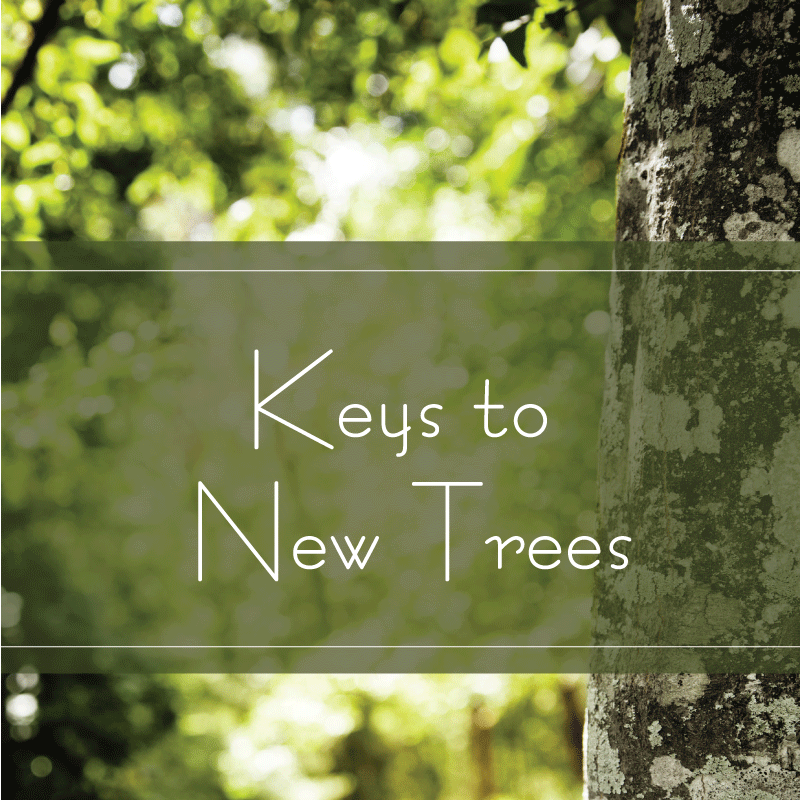 | | |
Keys to New Trees You’ve selected the best species to plant and the best
specimen at the local garden center. You’ve planted it correctly, now what? Fall is for planting, but what should we do after our new tree
is in the ground? Listen this week to learn keys to caring for new trees. Shortleaf pine, Pinus echinata Listen to this week’s #TreesAreKey to learn more about this
southern yellow pine that may be more tolerant of fire or mowing. |
.gif) | | |
Specialty Certifications Are Key We recommend you look for an ISA Certified Arborist to help
you care for your trees. You can find out more about certification in episode 69,
“Credentials are Key”. Listen to this episode to learn more about two specialty
credentials – the ISA Certified Arborist Municipal Specialist and Utility
Specialist. Working for a municipality or a utility require additional
skills and abilities, and a specialty credential can help you find the right
person to serve your community or utility. Sassafras, Sassafras albidum, is a Texas native tree which
can be beautiful in the fall and has a culinary history. Listen to this week’s
episode to find out how the plot thickens. |
.gif) | | |
Is Staking Key? Right now is a great time to plant trees for much of the
United States, particularly in warmer areas like Texas. We have talked about planting in previous episodes and today
we will review the pros and cons of staking trees. I recently had a great
conversation with Haywood Morgan, the City Forester in Denton, which spurred
this topic. Sweet gum, Liquidambar styraciflua is a large, Texas native
tree with a memorable fruit structure. Listen to this episode of #TreesAreKey
to learn more about this colorful tree. |
.gif) | | |
Keys to Tree Campus USA Did you know that Texas has more Tree Campus USA schools
than any other state? We talked about Tree City USA, a program from Arbor Day
Foundation, in episode 50. It’s great recognition for communities that care for
their trees. Did you know that colleges and universities can be
recognized for their efforts? Listen to this episode of #TreesAreKey to learn
more as we cover the Keys to Tree Campus USA. Species Spotlight – Carolina basswood Tilia americana var.
caroliniana is a great large Texas native tree that supports our pollinators.
The sweet, light-colored honey from this tree is a special treat. |
.gif) | | |
Keys to Tree Support Systems Have you ever walked out of the house and found half of your
tree lying on the ground? No? Consider yourself lucky. I had one customer that had nine beautiful flowering pears
when she went to sleep and the next morning more than half of them had split
apart and we had to remove them. As a tree guy, I know that Bradford pears have
structural issues and are likely to split down the middle, but most homeowners
have no idea until it happens to them. Some species like Bradford pear and Texas fall elm, also known as cedar
elm, are more likely to have weak branch angles or codominant stems. Listen to
this episode of Trees Are Key to learn more about the actions you can take to
help your trees. You’ve heard “Remember the Alamo” but do you know where the
name Alamo came from? Tune in to this episode of #TreesAreKey to learn how this
week’s species spotlight played a role in history. |
.gif) | | |
Legacy is Key Texas Arbor Day is coming and this year we are celebrating
in Nacogdoches, Texas. Considered the oldest town in Texas, Nacogdoches will be
celebrating their tricentennial. That’s right, the city’s 300th
birthday has arrived. What a legacy! Many things that we do or build may not last, but we can all
leave a legacy by planting and caring for our trees. Listen to this week’s
episode Legacy is Key. Species Spotlight – Alligator Juniper is a tough drought
tolerant tree that has year-round visual interest, particularly the bark which
gives the species its common name. Listen to learn more about this cool tree. |
.gif) | | |
Keys to Lightning Protection Flash, boom and crack. Storm season can hit almost any time of year and
with storms often comes lightning. Lightning can be devastating to our
electronics and our trees. Join us to learn the keys to protecting
our trees from lightning. Species Spotlight - Lacey Oak - Quercus
laceyi Trees come in different shapes, textures, and
colors. This week's tree is a distinctly blue tree, common name blue oak. Listen
to this week's #TreesAreKey podcast to learn more about Lacey oak. |
.gif) | | |
Keys to Ordinances Why does one community have great trees and the community
next to it doesn’t? Why should you need a permit to remove a large tree during
development? Why do some communities require tree care contractors to have
a permit or license before they work on your trees? In many cases the answer is ordinances: the rules
communities create can direct how trees are cared for, which trees can be
removed and help protect residents from unscrupulous contractors. Listen to this episode to learn Keys to Tree Ordinances Species Spotlight Pawpaw, Asimina triloba, is a fascinating native
fruit tree with a uniquely tropical flavor. Listen to this week’s #TreesAreKey
podcast to learn more about this wonderful tree. |
.gif) | | |
Keys to Proper Pruning This is an exciting time of year as it is almost time to
plant new trees and people are getting ready to prune their trees. Many people
do not know that there is a right way and a wrong way to prune. Listen to “Keys
to Proper Pruning” to learn more about how to properly care for your trees. Species Spotlight – Big tooth maple – Acer grandidentatum is
a great choice for fall color in central and west Texas, if you have the right
soil. Listen to this week’s Trees Are Key to learn more about this beautiful
tree. |
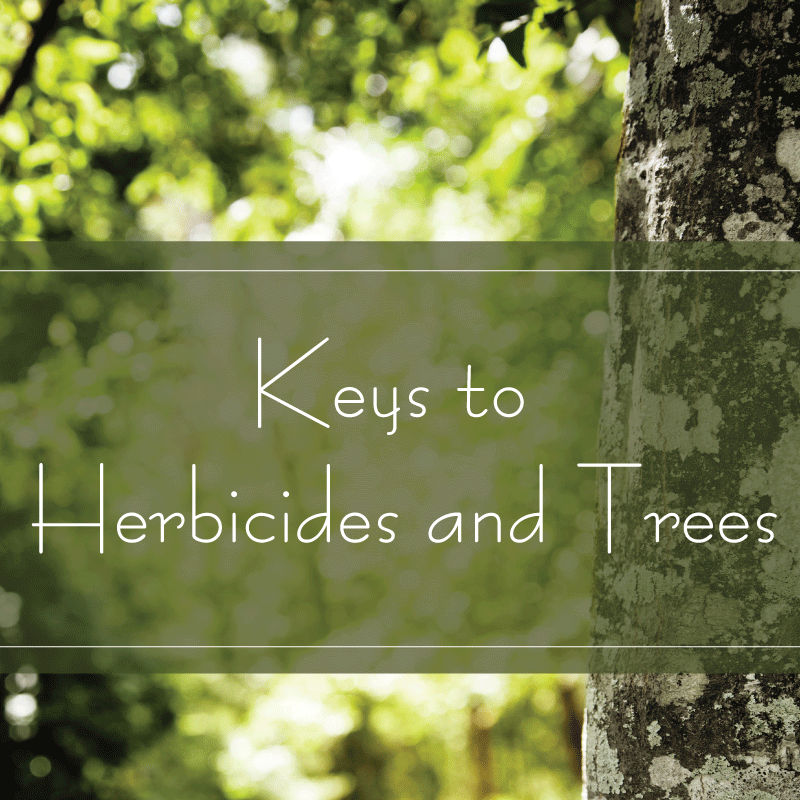 | | |
Keys to Herbicides and Trees It’s the time of year again when the ads on local TV and radio are encouraging you to care for your lawn. Usually that includes fertilizing, but what are these two-in-one and three-in-one products? Rarely do you hear an ad telling you to call a Certified Arborist or remind you to prune your trees. What should you know before you pick up a bag or two of weed-and-feed? Listen to “Keys to Herbicides and Trees” to learn more. Species Spotlight: Boxelder, Acer negundo, is commonly thought of as a weed or mistaken for poison-ivy. Listen to this week’s episode of #TreesAreKey to learn more about this species and find out how to separate it from that itchy weed, Toxicodendron radicans. |
 | | |
Not everyone has a large yard to plant and grow a tree, so are there other ways to grow trees? Could we grow a tree in a pot? As we consider that question, bonsai comes to mind. This ancient art is all about growing small trees by managing their root system. Learn more by listening to this episode of #TreesAreKey – “Keys to Container Trees”. Species Spotlight – This week’s tree is common across south Texas, but its sweet blossoms were once gathered to make French perfume. It would also make a great bonsai or container grown tree. Listen to learn more about Huisache aka Acacia farnesiana. |
.gif) | | |
What does it mean when the pecans are ripening and acorns begin
to fall? It’s time to think about growing trees from seed. Even though we often
argue about the best size of tree to plant, it is possible that starting with a
seed could be ideal. Join us for Keys To Growing from Seed. Species Spotlight Shumard oak, Quercus shumardii, is a beautiful large shade
tree that can grow well even in alkaline soils. Listen to this episode to learn
more about this great tree. |
 | | |
Summer is coming to an end and fall is just around the corner. One of the pleasures of fall is the changing colors of our leaves and their eventual fall to the ground. What makes leaves fall from our deciduous trees?
Someone cuts the top off a newly planted tree and a whole bunch of sprouts pop and try to replace the lost leaves. Why do multiple sprouts grow from one cut?
How does the tree know when to break bud in the spring?
How can you cut a branch off a tree and get it to grow roots?
These are all caused or influenced by hormones. Listen to this episode of #TreesAreKey to learn more.
Species Spotlight:
Gingko is a living fossil and a deciduous gymnosperm, and a unique species close to my heart. My wife and I planted a gingko as part of our wedding ceremony. Listen to this week’s #TreesAreKey episode to learn more about this fascinating tree. |
 | | |
We have talked a lot about how to hire a tree-care pro, climbing arborists, and credentials that are available in the tree care industry, but did you know that all Certified Arborists must agree to a Code of Ethics? Learn more by listening to “Ethics Are Key”. Species Spotlight: Southern magnolia, Magnolia grandiflora, is a beautiful, evergreen species. This Texas native can be a good choice if you have lots of room, but there is a smaller option. Listen to this episode to learn more about this southern belle. |
.gif) | | |
A fever has been sweeping the nation and I am not talking about the Olympics or even the start of football season. I am talking about an augmented reality game you might have heard of – Pokémon Go. Join us to talk about how Pokémon Go might be key to our trees, parks, and urban forestry programs in this week’s episode “Is Pokémon Go Key?” This week’s species spotlight has a funny common name, Tickle Tongue, but is officially known as Zanthoxylum clava-herculis. It gets its name from the anesthetic properties in all parts of the tree that can numb lips and tongues. Listen to this episode to learn more about this cool, little tree. |
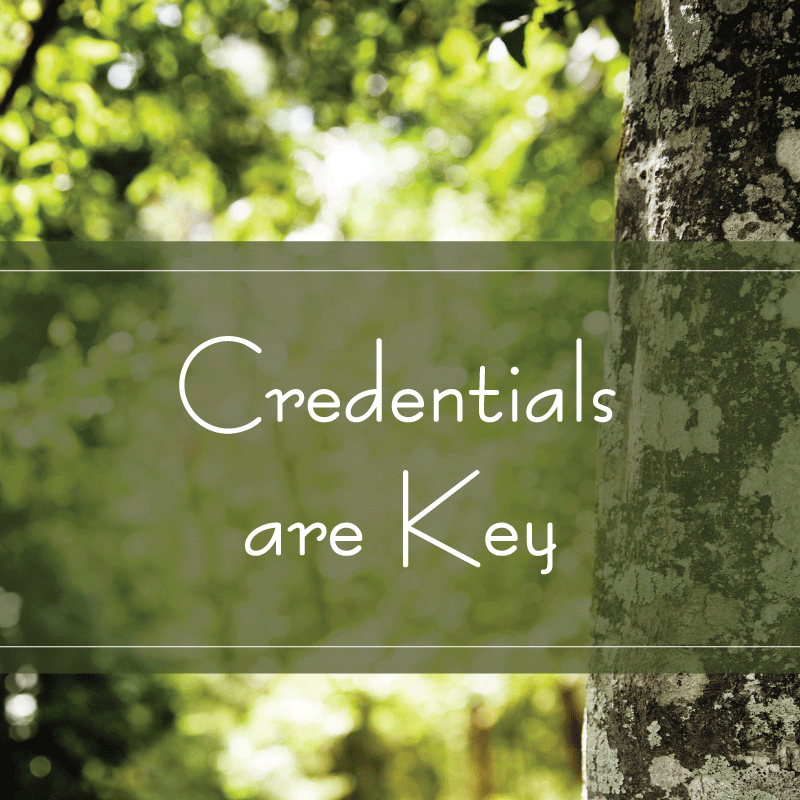 | | |
I am regularly asked how to go about hiring a tree professional. I cannot give a specific suggestion because I am a state employee and because I have a lot of friends in the industry. Learn more about potential credentials, such as a Certified Arborist, that are available in the tree care industry in “Credentials are Key”. Species Spotlight – Southern catalpa, Catalpa bignonioides, is a fascinating tree that can give us beautiful flowers and fishing bait. To learn more about the southern catalpa tune into the latest #TAK podcast. |
 | | |
There are many insects, diseases, viruses and animals that
can challenge our efforts to grow trees. We’ve talked about several of these in
previous episodes. Sometimes it seems like we should just spray all our plants every
other month to protect them but that isn’t a good option. Listen to this
episode as we talk about how Plant Health Care is Key to caring for our trees. Texas persimmon is a great, small tree that you would never
think of as a persimmon. It doesn’t have the large orange fruits or the
alligator bar but check out this drought tolerant tree that offers beauty and a
tasty treat. |
.gif) | | |
We have talked abiotics issues like drought and flood, diseases like oak wilt and powdery mildew, and six and eight legged pests like emerald ash borer. Listen to this episode of #TreesAreKey to learn more about two and four legged pests in Keys to Animal Damage. Tree of the Week – Species Spotlight: Lacebark elm – Ulmus parvifolia is a species originating from Asia, which is grown primarily for the bark. To learn more about the lacebark elm tune into the latest #TAKpodcast. |
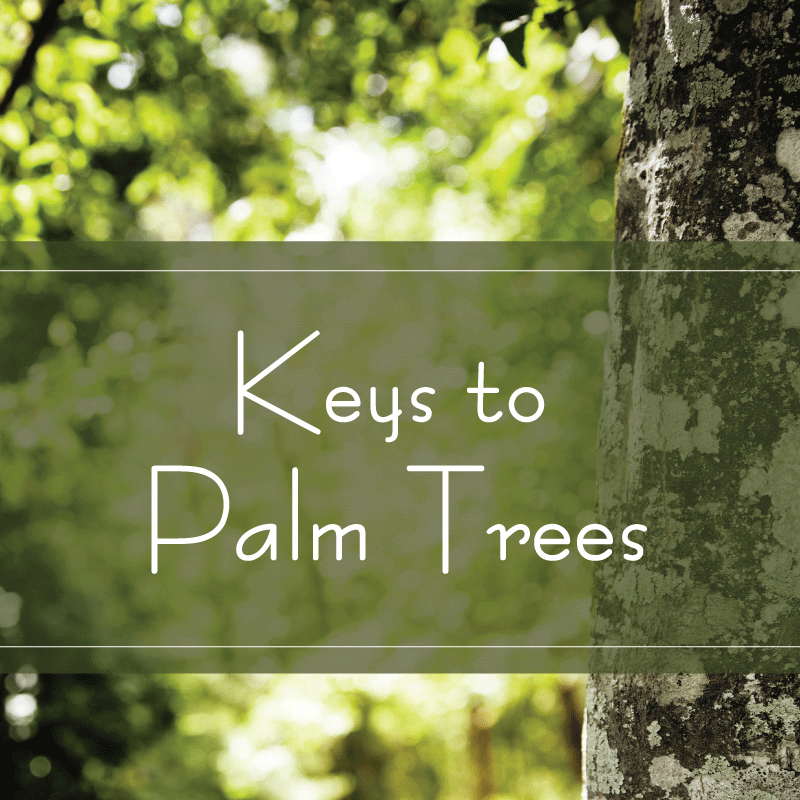 | | |
What do you want to see on a tropical vacation? Sand, water,
a cold beverage and palm trees. Palm trees are basically an arborescent grass and not botanically
a tree but they are gaining in popularity. Being biologically different from
woody trees they need different care. Tune in to learn the keys to growing palm trees. Texas sabal palm, Sabal mexicana, is our Texas native
arborescent palm. Listen this week to learn more about one of the best palms to
grow in our area. |
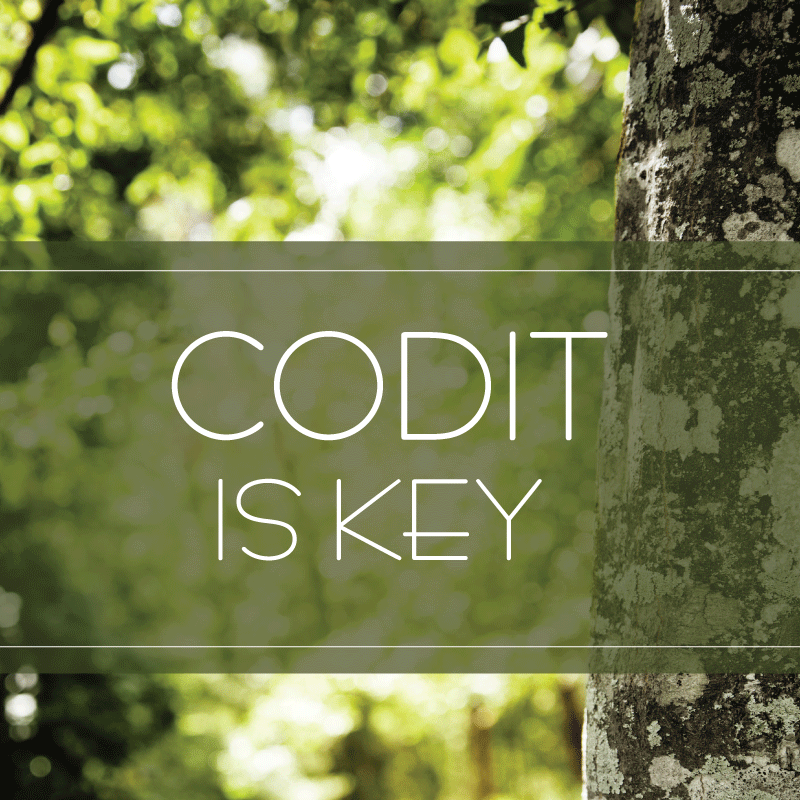 | | |
What do you think when you hear someone talking about
CODIT? Maybe you picture someone sitting in a dark room in front of
a computer with lines of code running across the screen? Or maybe you think
about Dr. Alex Shigo, the father of modern arboriculture, and his model of how
trees respond to wounding and decay. Join us this week as we talk about Compartmentalization of
Decay in Trees in “CODIT is Key” This week’s species spotlight is Eastern redcedar, Juniperus
virginiana var. virginiana. This tough, Texas native evergreen makes a great
screen or windbreak. |
 | | |
Do you know the 10 most common trees in Austin? Do you know how much storm water runoff our trees help control? Wonder how much carbon is locked up in our trees? Join us this week to talk about the first intensified and accelerated Urban Forest Inventory and Analysis (FIA) completed in the United States. We will even talk about what percentage of Austin’s trees are city owned as we discuss Urban FIA is Key. Species spotlight – this week’s tree is much maligned but is valuable to the City of Austin and the surrounding area in many ways. Listen to this week’s #TreesAreKey to learn more about ashe juniper.. |
 | | |
Fuel, flavor and mulch are just a few ways to use a tree once it’s time has passed. Even trees grown in our cities can be used for art, furniture and tools. Join us this week as we talk about life for our trees after death in Keys to Urban Wood Utilization. Species Spotlight: Listen this week to learn about black walnut's little brother known as little walnut or Texas walnut. |
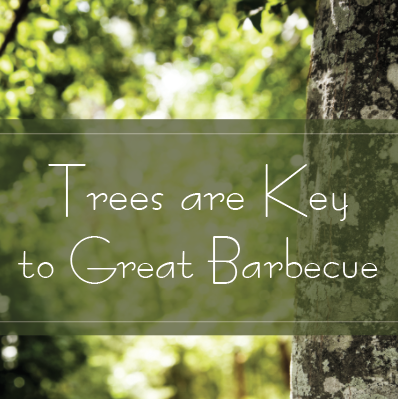 | | |
The Texas Trinity is brisket, sausage and ribs but they couldn’t happen without trees. Wood smoke is key to the flavor of BBQ. From post oak in central Texas to pimento wood in the Caribbean, the wood of choice influences the taste of our dinner. Listen to this week’s Trees Are Key podcast to learn more about using wood smoke as flavor. Species Spotlight: Mesquite or honey mesquite is a tough, Texas native that many despise for its weedy character but love for its tasty enhancement of barbecue. Listen this week to learn more about this much hated and loved tree. |
 | | |
Many people are more afraid of public speaking than they are of climbing a tree… Join us this week to find out how to speak for the trees in “Keys to Being a Lorax” This week’s species spotlight is the truffula tree – find out more about this rare tree by listening to this week’s episode of #TreesAreKey |
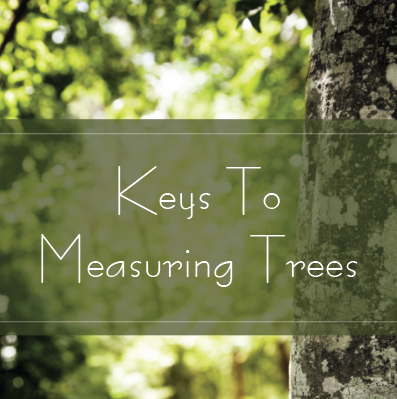 | | |
Ever wondered if the tree in your backyard is tall enough to
hit the house if it fell? Have you seen a really big tree and wondered if it
could be a Texas or National champion? Listen to this week’s episode to learn
the Keys to Measuring Trees. This week’s species spotlight is a unique tree that may be
difficult to find, but could be a focal point in your landscape. Texas madrone
is a great native tree with attractive bark that would add visual interest
year-round. |
 | | |
From McAllen’s Arbor Day celebration to the Stihl Tour De Trees, there is a connection between trees and bicycles that may not seem obvious. Listen to this week’s Trees Are Key to learn why bicycles are key with guest Grady McGahan. Executive Director of Retreet. |
 | | |
Whether it’s the fires in Bastrop, the floods in Wimberley or tornadoes in Oklahoma; there is something you can do to make a difference when it comes to the trees lost in these disasters. Listen this week to pick up a few keys to making a difference with special guest Grady McGahan, Retreet executive director. |
 | | |
What’s wrong with my tree? It’s a common question. Listen to this week’s episode to learn the steps to being your own plant detective and find out how to get help figuring it out. Tree of the Week - Species Spotlight - Rio Grande ash and beautiful ash from South Texas. Listen to this week’s episode to learn how to identify this tree and why it might not be a good idea to plant it. |
.JPG) | | |
Join us this week to learn keys to developing successful tree partnerships with special guest Dana Karcher, Alliance for Community Trees program manager. |
.PNG) | | |
“A people without children would face a hopeless
future; a country without trees is almost as helpless.” ― Theodore Roosevelt Join us to learn how to cultivate a culture of trees
with our kids in this week’s episode of Trees Are Key. Species Spotlight – Eastern Hophornbeam, Ostrya
virginiana, Ironwood Ironwood may be uncommon in your local garden center,
but it may be a great Texas native for you to add to your landscape. Listen
this week to learn more about this wonderful tree. |
.PNG) | | |
High winds can be very damaging to our trees. Listen
this week to learn more about how to avoid wind damage and what you can do if
your trees are damaged in a storm. Tree of the Week – Species Spotlight – Rusty blackhaw This week’s tree comes from our East Texas Regional
Urban Forester Zaina Gates. Listen to learn more about this small, drought
tolerant tree that looks great in all four seasons. |
.png) | | |
The last
Friday in April is National Arbor Day – it may not be a great time to plant
trees across much of Texas, but it is a great time to celebrate trees and their
importance in our lives. Listen this week to learn more about the beginnings of
Arbor Day and find out who is being recognized by Arbor Day Foundation for
their efforts to improve our trees and forests. |
.png) | | |
Earth Day is 46 years
old this year and has captured a lot of attention. I think it’s too bad that
Arbor Day and Earth Day are so close together, but there can be a synergy -- In
many areas they combine the two events into one big celebration. Anything that
helps raise awareness of the environment, natural resources, and yes --
especially trees -- is a good thing. Join us to learn ways to integrate trees
into your local Earth Day celebration. |
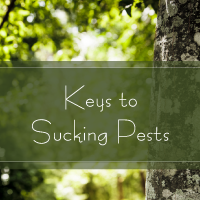 | | |
We’ve talked about oak wilt, emerald ash borer, and defoliating insects previously. This week join us to learn more about pests with piercing and sucking mouth parts in Keys to Sucking Pests.
Our species spotlight is crapemyrtle, Laegerstromia indica, a beautiful, blooming tree that is common across Texas. Listen this week to learn more about the controversies surrounding this non-native tree.
|
 | | |
Managing trees in our communities is key to maximizing the environmental, economic and social benefits of our community forests.
How do you get started? How can a city, utility company or college campus be recognized for their efforts to care for their trees?
That’s where three programs from Arbor Day Foundation come in. Join us to learn more in Tree City USA Is Key.
Anacua, Ehretia anacua, is a unique, tough Texas native that has a unique leaf. Listen this week to learn more about this wonderful tree. |
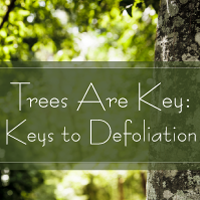 | | |
There are many things that can cause a tree’s leaves to fall off or disappear. Listen this week to learn more about how to figure out what is going on and if you need to do something to help your tree.
This week’s tree of the week is Texas Fall Elm also known as cedar elm. This tough Texas native can be a great choice in your yard or landscape. Listen this week to find out more about our Fall Elm. |
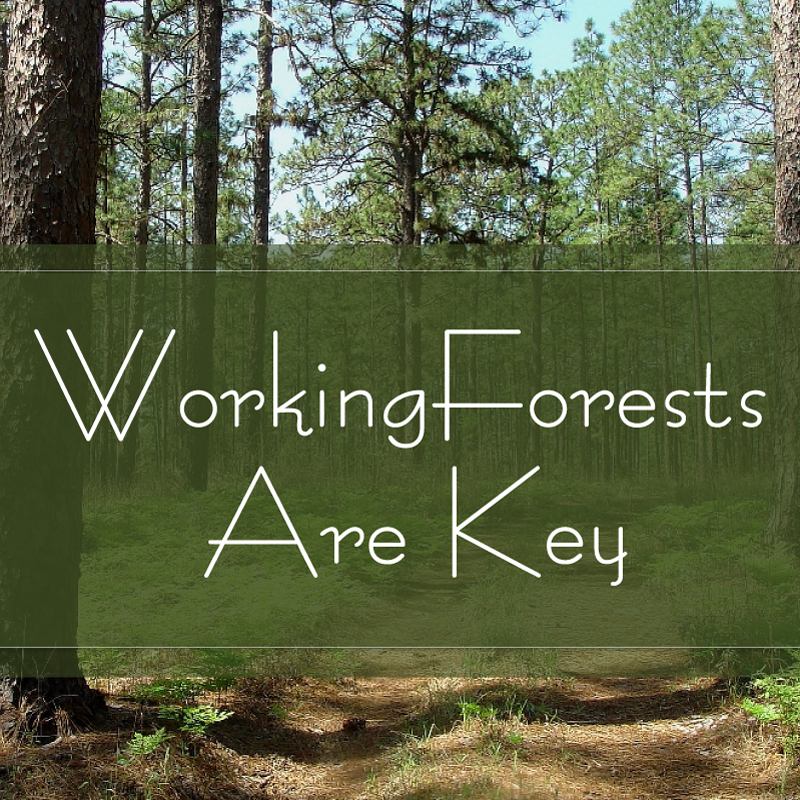 | | |
Let’s step outside of our community forests and look around. There are many acres of forestland across Texas. According to our 2011 FIA (Forest Inventory and Analysis) program there are over 62 million acres of forests and woodlands in Texas. This is second only to Alaska in total acres.
In town, we think about our community forests producing shade, clean air & water, reducing flood waters, and increasing property values.
Out of town, tangible products such as wood products (lumber, fuelwood, pulp), non-wood products (syrup, edibles, wildlife), and ecosystem services are produced … we need to keep forests as forests … trees are a renewable resource.
Tree of the Week: Sugarberry aka palo blanco aka Celtis laevigata is a fast growing, short-lived species that is prime habitat for birds. Listen this week to learn more about an important habitat species.
|
.png) | | |
Knowing how a tree grows is powerful and as they say – “with great power comes great responsibility”
We’ve talked about trees needing light, water, air, nutrients and soil in episode 3 “Keys to Tree Growth”
But why do trees grow up and not down?
Why are trees in windy areas shorter?
Why does the tree planted near the house grow away from the house at an angle?
Join us this week to learn more about why “Tropisms Are Key”
Mexican Buckeye is this week’s species spotlight. This tough, drought tolerant Texas native may be a good substitute for redbud. Listen this week to learn more about this wonderful flowering tree.
|
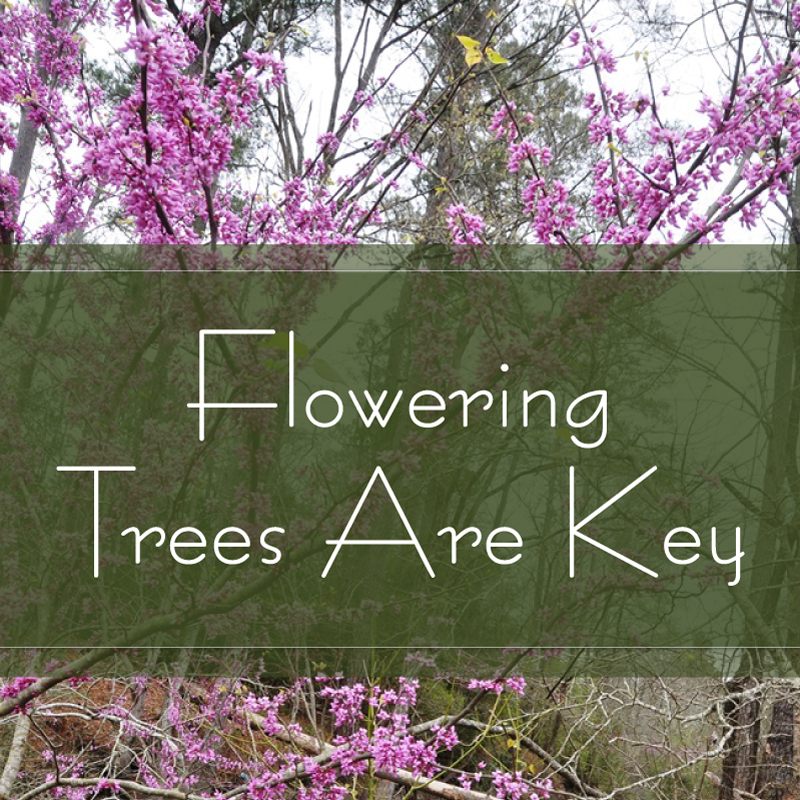 | | |
All trees bloom, but not all have showy flowers. Flowers are beautiful and provide habitat for hummingbirds, butterflies, and bees. Join us this week to learn more about including flowering trees in our communities.
Species Spotlight – Texas mountain laurel is a standout this time of year. Listen this week to learn more about this sweet scented tree.
|
.png) | | |
Join us this week as we wrap up our discussion of the 3Rs – Readiness, Response and Recovery. We’ve talked about how to prepare for a disaster and how to respond to the event. It’s now time to discuss how to help your community recover their trees and community forest. After all, trees are key to healthier, happier communities and we can make a difference.
This week’s species spotlight is loblolly pine, the species at the center of the recovery efforts in the Lost Pines area near Bastrop, Texas. Join us this week to learn more about this economically important tree.
|
 | | |
Join us this week as we continue our exploration of the 3Rs — Readiness, Response, and Recovery. Proper, timely response to an emergency is key to keeping the public safe and protecting our trees.
Species Spotlight — Carolina cherry-laurel is a small, evergreen tree that bees love. Listen this week to learn more about this Texas native tree.
|
 | | |
Planning for storms and pests is key to protecting our trees and ourselves. Listen this week to find out how to ready your community forests and the trees in your yard for a natural disaster. Species Spotlight: Wild Olive, Cordia boissieri This beautiful, small native evergreen can bloom 11 months out of the year in the Rio Grande Valley and is grown across the southwest. Listen to learn more about this unique tree. http://texastreeplanting.tamu.edu/treepictures/anacahuite.jpg |
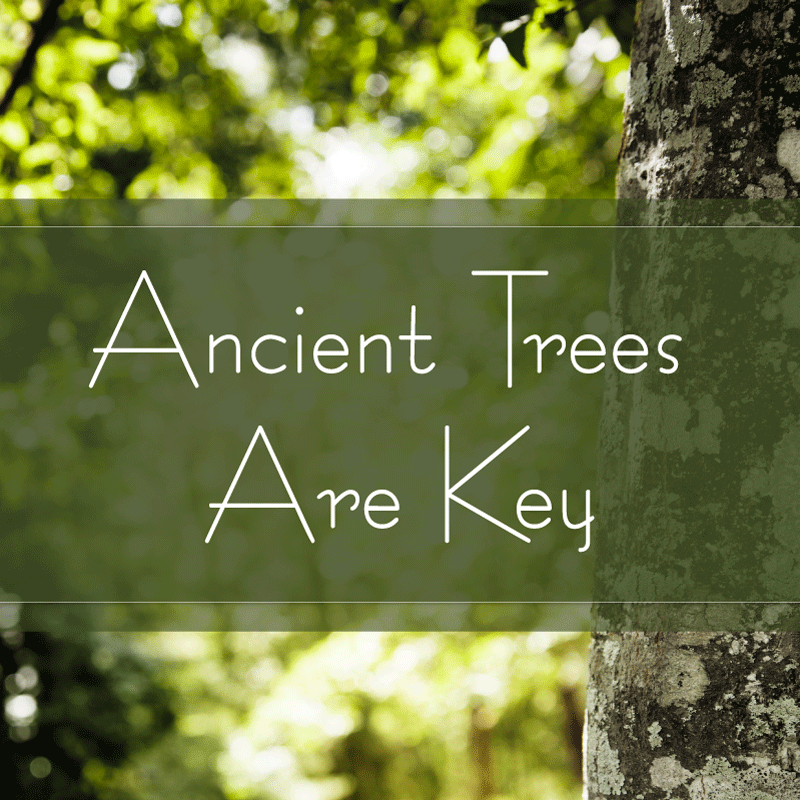 | | |
People are fascinated with big, old trees and they, often desperately, want to know how old they are. Listen this week to learn several techniques to estimate the age of your trees and learn the keys to caring for them. Species spotlight: Quaking aspen is the most widely distributed tree in North America which puts on an amazing display of fall color. Listen this week to learn more. |
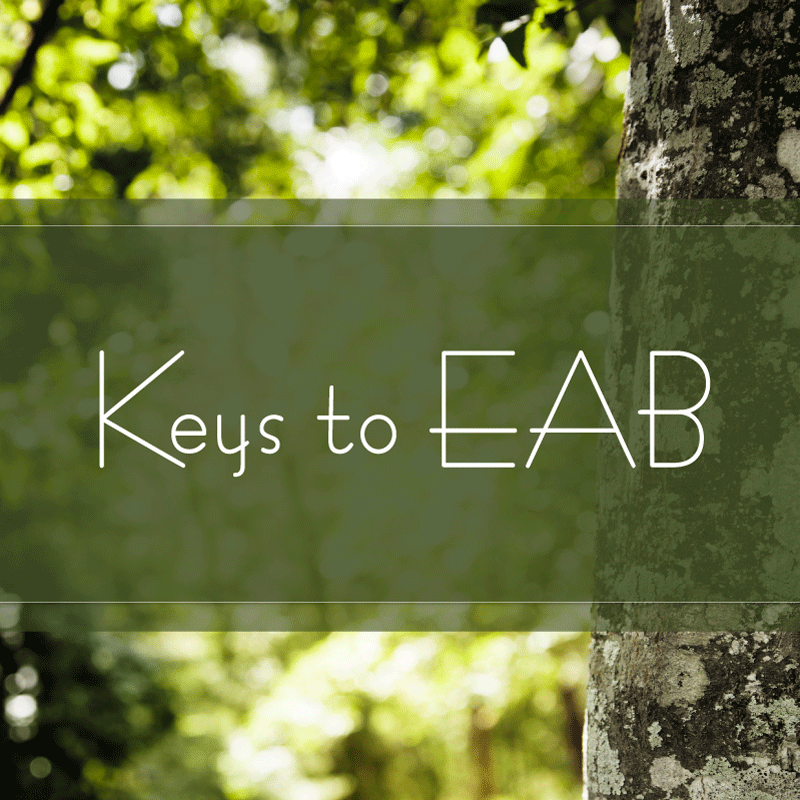 | | |
Emerald Ash Borer, or EAB, is a serious threat to our ash trees that has been marching across the U.S. and Canada since 2002. Join us this week to learn how to spot their damage, identify the culprit and what you can do to help. Species Spotlight: The Kentucky coffee tree was used by early settlers as a coffee substitute. This is the only species in North America in the genus Gymnocladus and has no serious pest or disease issues. Kentucky coffee tree is a great choice in lawn areas because it allows sunlight to reach the ground and is drought tolerant. |
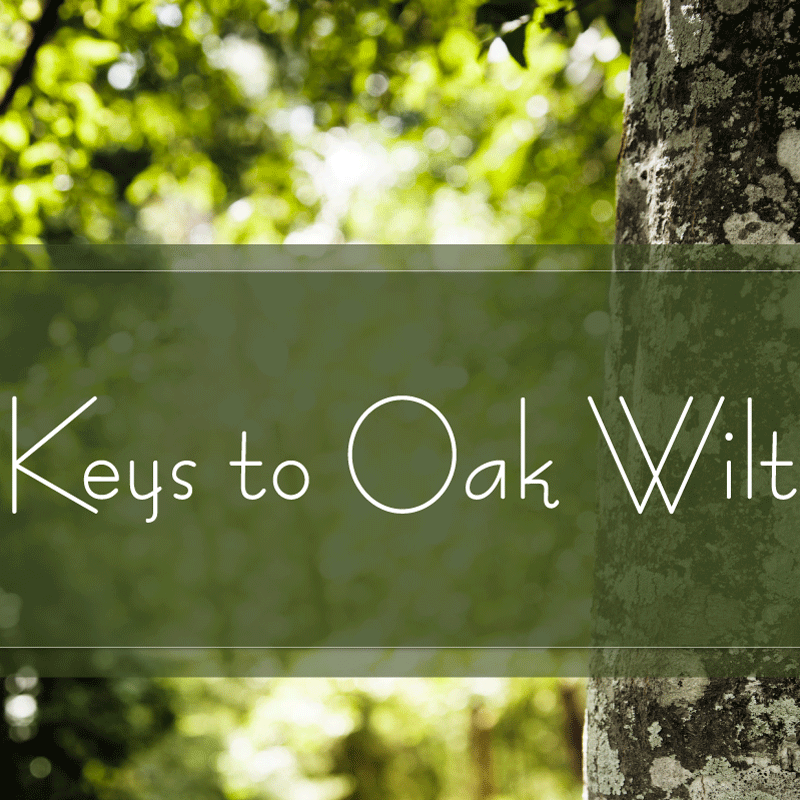 | | |
Oak wilt is a devastating fungal disease in Texas that has wiped out many large, beautiful trees. Join us this week to learn the keys to diagnosing, managing and avoiding this disease. Tree of the Week: Post oak
Post oak is the not so secret ingredient in some of the best barbecue Central Texas has to offer. This tough, native Texas tree can be sensitive to building and development. Learn more about post oak in this week’s episode of “Trees Are Key.” |
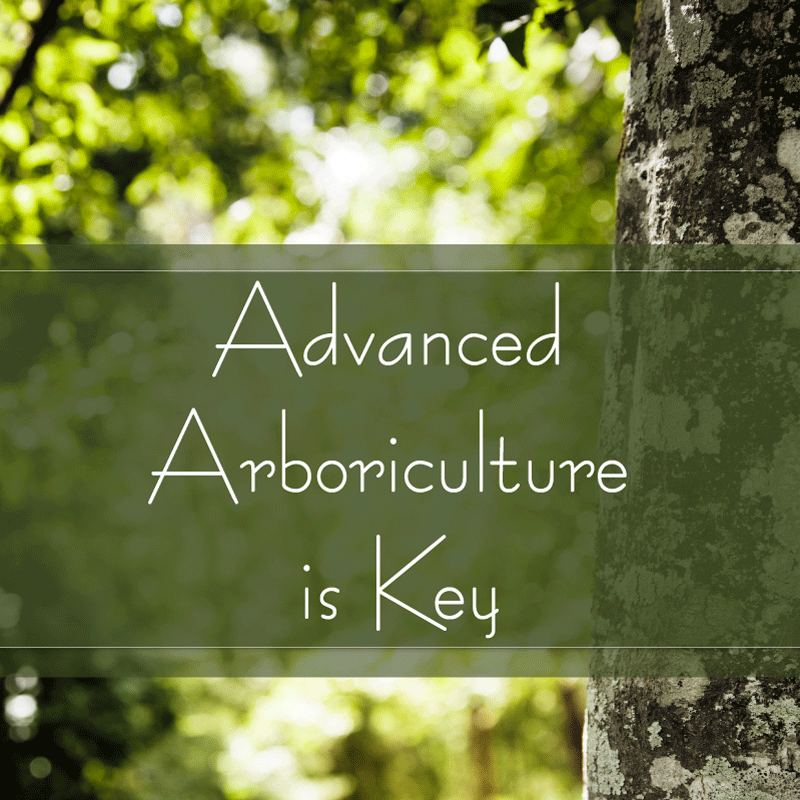 | | |
Curious if you can bare-root a 6.5 inch Shumard oak to
transplant it? Wonder if your tree is hollow and therefore more likely to fall
over in a storm? Join us for this week’s episode “Advanced Arboriculture is
Key” to learn how advanced techniques can answer these questions. Pneumatic excavation, resistance drilling and sonic
tomography are advanced arboriculture activities that can be used to improve or
assess our trees. This week’s tree of the week is American Holly — a tough,
native evergreen that can be used in many sites across Texas. |
 | | |
Have you ever picked a sweet, ripe peach off of a tree and taken a bite just to have the sun warmed juice run down your chin? Edible trees elicit a passion that rivals common sense. We have seen people line up hours early on a bitterly cold January morning to get a free fruit tree at the San Antonio Jammin’ Jams Fruit Tree Adoption. Join us this week to learn more about fruit and nut trees. We can’t talk about edible trees without talking about our state tree, the pecan, our tree of the week. From pecan pie to butter pecan ice cream to pecan sandies this native nut has earned its place on our table. |
.gif) | | |
Now that it's 2016, there are a few
things you can do to make a difference for our trees. Consider these 9 options
for your tree resolutions. Our tree of the week is yaupon holly, Ilex vomitoria. It's a
tough and beautiful ornamental tree with a less than beautiful species name. |
 | | |
As we come to the end of 2015, let’s reflect on what we have learned and
covered so far in Trees Are Key. It has been eight months packed with
information about key tree basics, keys to caring for trees, key tree programs
and hopefully, a little fun along the way. Have a Happy New Year |
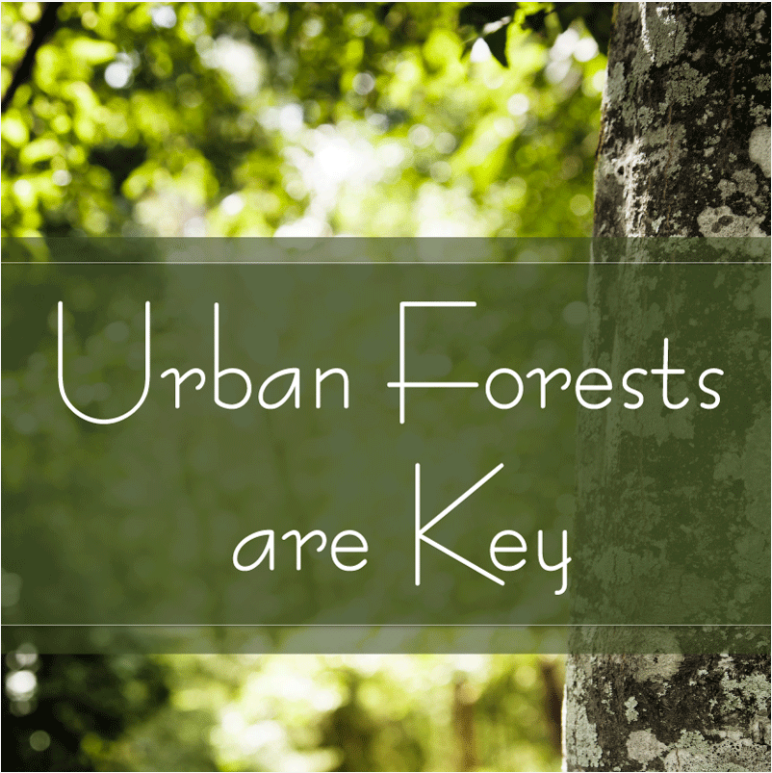 | | |
Urban and forest may sound like two
words that don’t belong together, but urban forests are key to healthy, happy
and sustainable towns and cities. Join us this week to learn more about urban
forests and the people responsible for caring for them— urban foresters. Species Spotlight: This week’s tree
is rusty blackhaw, a small, flowering tree that does well in our yards and has
few pests. |
 | | |
As winter’s grip tightens across the nation, there are a few
things we can do to help our trees. Check out this week’s episode of Trees Are
Key to find out how to help your trees survive the cold. Species Spotlight – Citrus is one of winter’s sweet
surprises. Have you tried to grow your own, but it’s just too cold where you
live? Check out this week’s tree of the week – ‘Arctic Frost’ satsuma, a Texas
SuperStar® |
.PNG) | | |
It is the season of giving and we have a few gift ideas for
anyone that loves trees. From books to tools, jewelry or art — there is
something for everyone in this week’s episode of Trees Are Key. This week’s tree of the week is Texas ebony. This tough,
evergreen, Texas native is a great tree and there is a famous ebony along the
banks of the Rio Grande River. |
.jpg?n=2446) | | |
'Tis the season for gathering, giving, and celebrating the holidays. For many people that means bring a bit of the outside inside --Christmas trees are going up in homes everyday. Find out more about how to bring a real tree, living or cut, into your home on this week’s podcast “Keys to Christmas Trees”
Tree Of The Week: The Christmas Tree -- History.com states that Christmas trees are grown in all 50 states -- even Alaska and Hawaii. Start a new tradition and cut your own tree. There are Christmas trees farms in many areas – find out how to find the one closest to you and support a local farmer. |
.PNG) | | |
Fallen
leaves are key to saying time and money. Many people spend time raking and
bagging leaves in the fall, but those leavers are a great source of organic
material and nutrients. Join us this week to find out how to use this free
resource Species
Spotlight: Mexican sycamore is a fast growing, well-adapted shade tree that is
a good choice for many of our yards. Listen to this week’s episode of Trees Are
Key to find out more about this beautiful tree. |
 | | |
Shorter days, cooler temperatures and falling leaves seem to make people think about fertilizing their trees. Fertilizing may help your tree, but the tree may not need to be fertilized. Join us to learn more about the nutrients trees need, soil and leaf testing and different ways to apply fertilizer.
This week’s species spotlight is Arizona ash (Fraxinus velutina) a commonly planted tree you may want to remove from your plant palate.
|
 | | |
We lose trees after every storm. A few pruning
cuts can make all the difference in how long your tree lives. Join us this week
to find out why structural pruning is key and how to get started.
Mexican white oak is our tree of the week — find out more about this Texas
native in this week’s #TreesAreKey podcast.
|
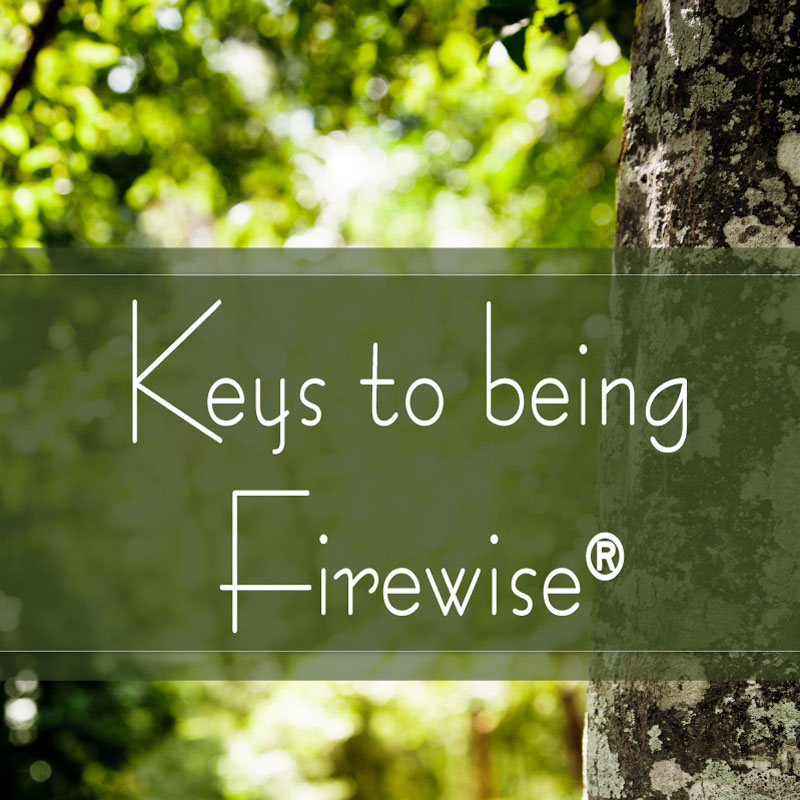 | | |
In this week’s episode of Trees Are Key we have guest Kari Hines a wildland urban interface specialist with Texas A&M Forest Service. Wildfire can be disruptive and devastating. This week find out what you can do to be more Firewise® and protect your home and family from wildfire. What is WUI? Do you live in a WUI area? What is your risk of damage from wildfire? Join us this week as Hines helps get you started on the path to being Firewise®. |
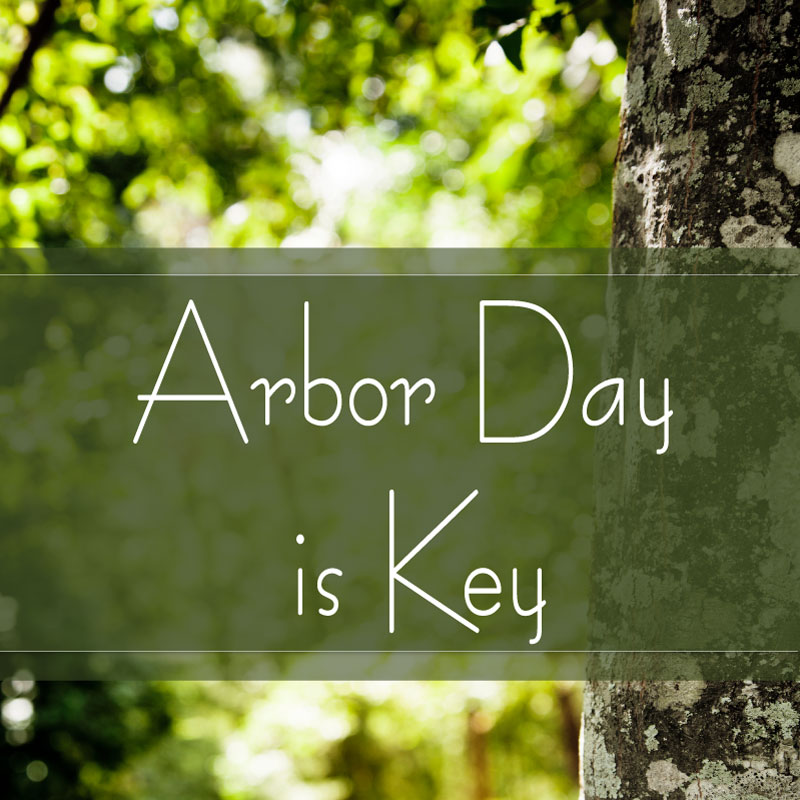 | | |
Arbor Day is the annual celebration of trees. This week we have a special guest, Tom Boggus, Texas State Forester and director of Texas A&M Forest Service joining us to talk about the importance of Arbor Day.
This year, our Texas Arbor Day is being celebrated in College Station at the George Bush Presidential Library and Museum on Friday, Nov. 6 at 10 a.m. Visit tfsweb.tamu.edu/content/article.aspx?id=22497 to learn more! |
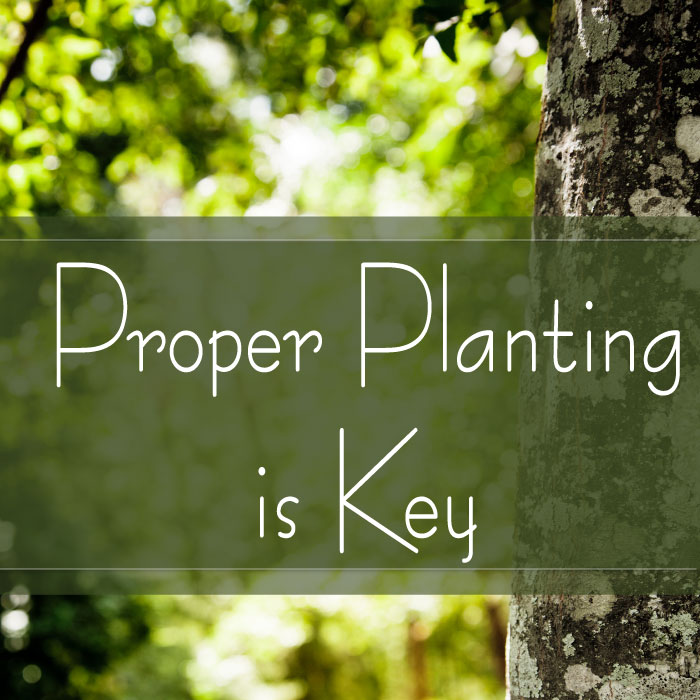 | | |
It’s tree planting season and we have talked about what species to plant and how to pick a great tree in the nursery. It is now time to talk about how to properly plant the tree for long term success. Our species spotlight this week is bur oak — one of my favorite trees! This is also the tree that we have planted all over Texas this year in commemoration of our Texas A&M Forest Service centennial. |
 | | |
It’s planting season and picking the right kind of tree is important. So is the way you plant your tree, but there is a step in between. How do you pick which tree in the nursery or garden center you should buy and plant? Join us this week to learn more about Keys to Selecting THE Tree. This week’s tree of the week is tepeguaje or great lead tree. This fast growing Texas native can quickly change the environment where it is planted and improve the survival of other species. |
.jpg) | | |
‘Right Tree, Right Place’ has been around for decades. What does it really mean? What tree should I plant in my yard? Find out in this week’s Trees Are Key episode “Species Selection is Key.” Species Spotlight: American smoketree is a beautiful, small, native tree that isn’t used often, but it is well adapted to the tough conditions we find in our towns and cities. Listen to this week’s episode to find out more about this unique tree. |
.jpg) | | |
Buildings are going up left and right — there is a local joke about cranes being the official bird of Austin because of all the construction cranes downtown. Construction is tough on trees, but there are a few actions we can take to protect and preserve our trees through the process.
Species Spotlight: The Texas live oak (Quercus fusiformis) is a tough Texas native that grows well in our droughty, alkaline soils. Typically smaller than its southern cousin, Quercus virginiana, Texas live oak thrives under tougher growing conditions and accounts from many of our Famous Trees of Texas. |
.jpg?n=3586) | | |
Soil is the foundation of our trees and key to their success.
Knowing more about your soil will help you determine what you need to do for your trees. Soil texture, bulk densityand pH are key factors in determining what trees species will grow well for you. Join us this week to learn more about soils and trees.
This week’s species spotlight is desert willow a beautiful small flowering tree that is also drought tolerant. |
.jpg) | | |
As the weather cools, our thoughts turn to football and baseball, sweaters and falling leaves. But why do trees lose their leaves? Why do they turn such brilliant colors? Listen to this week’s episode of Trees Are Key to find out. Our Species Spotlight this week is Ulmus Americana — American elm. This poor tree has faced a dreadful enemy, the Dutch elm disease, but that is no reason to give up on it. Find out more about our stately American elm by listening to this week’s episode. |
 (1).jpg) | | |
Trees do a lot of great things, but falling down isn’t one of them. Want to know how to keep your family and home safe? Listen to this week’s episode, Keys to Tree Risk Management. We are getting close to planting season and this week we introduce our new Tree of The Week: Species Spotlight where we highlight trees you should consider planting in your yard, neighborhood or town. This week we start with Retama aka Jerusalem Thorne — find out more about this colorful, drought-hardy tree by listening to this week’s episode of Trees Are Key. |
.jpg) | | |
Roots are key to healthy trees, yet they are out of sight and we don’t know much about them. We know topping trees — indiscriminately cutting the ends off branches — is bad, but we don’t know that trenching to install a sprinkler system can be just as bad if not worse. Join us this week to learn the eight things you need to know about tree roots. Upcoming events:
Visit isatexas.com to learn more about the Texas Tree Conference, academy and school. Visit kdb.org or ctufc.org to learn more about the North Texas Citizen Forester program. Join #treechat on Twitter each Tuesday from 1 p.m. to 2 p.m. Central Time. |
We have a guest this week — Mickey Merritt is one of our regional urban foresters from Houston and he is a big tree hunter.
Have you seen a big tree? How do you know if that big tree is really big? Want to learn more about measuring big trees? Listen to find out more about this regional, state and national program.
Check out our website for our Big Tree Registry.
Summer is coming to a close, but that doesn’t mean we can’t enjoy a nice trip or vacation. Recently, I was asked where good vacation locations in Texas were, that included trees. This episode is the answer to that question.
Here are the sites that I refer to in this episode.
Our Tree Trails app - http://texasforestinfo.tamu.edu/treetrails/
Houston Area Urban Forestry Council Big Tree Registry—http://haufc.org/wp-content/uploads/2013/12/HarrisCountyTreeRegistry2011.pdf
City of Ft Worth has a Heritage trees tour—http://fortworthtexas.gov/forestry/heritage-trees/
Portland’s Heritage Trees which can be downloaded for free or order a printed copy for $5—https://www.portlandoregon.gov/parks/article/441738
PDX Trees—http://pdxtrees.org/
Tampa Tree Map—http://tampatreemap.usf.edu/
North Texas Citizen Forester Program—http://kdb.org or http://ctufc.org for more information.
It might be best for our trees to outlaw lawns across the country, but that isn’t realistic. People love their lawns and their trees. Join us this week to learn how you can have both.
Find out how you can care for your tree on our Lawn Care Around Trees info sheet in our Urban Forestry Information Pages.
It doesn’t take long to figure out trees are important on a hot, summer day in Texas. Just go to a local shopping center parking lot and you will see many cars parked in the shade. You can see the same thing in rural areas with the cows in fields. Shade is key to comfort, but it is also key to our bank accounts. Join us for this week’s episode to learn more about how Shade is Key.
Mentioned energy saving, tree planting initiatives:
City of San Antonio and CPS Energy – Green Shade Rebate: https://www.cpsenergy.com/en/my-home/ways-to-save/rebates-rebate/green-shade-tree-rebate.html
Oncor Energy and Arbor Day Foundation: http://energysavingtrees.arborday.org/#Home
City of Austin, Austin Energy and TreeFolks: http://www.treefolks.org/neighborwoods-free-trees-for-your-home/
City of Denton and Keep Denton Beautiful—more info to come at http://kdb.org/
Even with all the rain we have received this year, our trees may be suffering from drought. Join us to learn what we can do to help our trees through that tough time when no water falls from the sky.
Something as simple as properly mulching you tree (http://tfsweb.tamu.edu/uploadedFiles/TFS_Main/Urban_and_Community_Forestry/About_Urban_and_Community_Forestry/Urban_Forest_Information_Sheets/How%20do%20I%20care%20for%20my%20Tree%20-%20Mulching%20your%20%20tree.pdf) could help your tree survive our long, hot and dry summers.
Our tree of the week is the former champion Rio Grande cottonwood. You can find other Texas champions on our Big Tree Registry. http://tfsweb.tamu.edu/uploadedFiles/TFSMain/Learn_and_Explore/Conservation_Education_Resources(5)/rptBTR-NativeNaturalized_5-15.pdf
Paul will be teaching about trees and drought at Texas Nursery and Landscape Association’s Expo in Dallas on Aug. 14. Find out more at http://www.nurserylandscapeexpo.org/
We are entering the summer dormancy which is a great time to prune trees. We need to set our pruning goals and select the best pruning type to achieve those goals. In this episode we talk about standard language for different types—or methods—of pruning. This is so we know the work we’re asking for it the work that will be done.
You can find out more about our Big Tree Registry through our website www.tfsweb.tamu.edu
Treevents:
Tree Chat on Twitter is every Tuesday from 1 p.m. – 2 p.m. Central Time. Search for #treechat.
International Society of Arboriculture Annual Conference is in Orlando, Florida on August 9 – 13. Find out more at www.isa-arbor.com.
Texas Nursery and Landscape Association’s Expo is in Dallas on August 13 – 15. Find out more at www.nurserylandscapeexpo.org.
PPE stands for personal protective equipment and it is the first step before working on your trees. Join us to find out what you need to protect yourself.
Join us for #treechat on Twitter Tuesdays from 1 p.m. – 2 p.m. Search for #treechat in your favorite Twitter app.
International Society of Arboriculture hosts their International Conference in Orlando, Florida next month. Find out more at http://www.isa-arbor.com/home.aspx
Trees can be a physical connection with our past and our future. Whether it is a Kissing Oak or a Hanging Oak, many communities have trees that are important and have stories that deserve to be told.
Listen this week to learn more about the Famous Trees of Texas program from Gretchen Riley—one of the authors of the centennial edition of the Famous Trees of Texas book.
Get your copy of the book today!
Visit the Famous Trees of Texas website to explore more trees or nominate a tree.
Join Paul (@treevangelist), during #treechat on Twitter every Tuesday from 1 p.m. to 2 p.m. Central Time. Search for #treechat and use the hashtag to join the conversation!
Water is vital for the success of our trees. Too much or too little can be an issue. In this week’s podcast find out how, when and how much to water your trees, and when you don’t need to bother.
You’ll also learn how to test your sprinkler system in order to run it the appropriate length of time.
Supporting information can be found in our Urban Forest information sheets.
Join Paul (@treevangelist), during #treechat on Twitter every Tuesday from 1 p.m. to 2 p.m. Central Time. Search for #treechat and use the hashtag to join the conversation!
Knowing what kind of tree you have is key for proper tree care. You can always ask someone else, but we will get you started on the road to do it yourself tree id.
Do you know the difference between simple and compound leaves?
Do you know the difference between opposite and alternate leaf arrangement?
Do you know we have a tree ID website?
This week’s tree of the week is the Center Oak from the Famous Trees of Texas Centennial Edition. Get your copy of the book today.
Improper pruning is one of the biggest challenges trees face in our towns and cities.
It could be someone using a polesaw to trim the branches away from their house or the so called “tree guy” that strips all the limbs and foliage out of the center of our tree, leaving twigs and leaves only at the end of the branch—known as lion’s-tailing.
One of the best defenses against improper pruning is the climbing arborist. They can get up into a tree, fully assess its needs and properly prune the tree.
Listen to find out more about our Tree Climbing Championships, the dangers of tree care and ISA’s Certified Tree Worker Climber Specialist.
Visit www.isatexas.com to learn more about the Texas Tree Climbing Championship and the Tree Care Industry Association’s Chipper Safety Class on June 26 in Irving, Texas. Find out more about tree care safety at www.tcia.org.
This episode is inspired by the late Dr. Bonnie Appleton. We do a lot to our trees and around our trees because we think it helps the tree. Unfortunately, often this is not the case. Join us to find out if you are guilty of loving your tree to death.
How To Kill a Tree by Dr. Bonnie Appleton https://pubs.ext.vt.edu/430/430-210/430-210_pdf.pdf
Our thoughts and prayers go out to everyone affected by the recent storms.
It is especially important in the initial days of a flooding event to take action. When there is a flood, there are things
you can do to reduce safety hazards caused by downed and damaged trees and protect the trees still standing.
Here is a little information about how to care for your trees following the floods.
Additional resources:
Hire an ISA Certified Arborist at isatexas.com.
Donate to help restore trees in flood-affected
areas at treecovery.tamu.edu.
Learn more about repairing trees after the storm
at tfsweb.tamu.edu/afterthestorm.
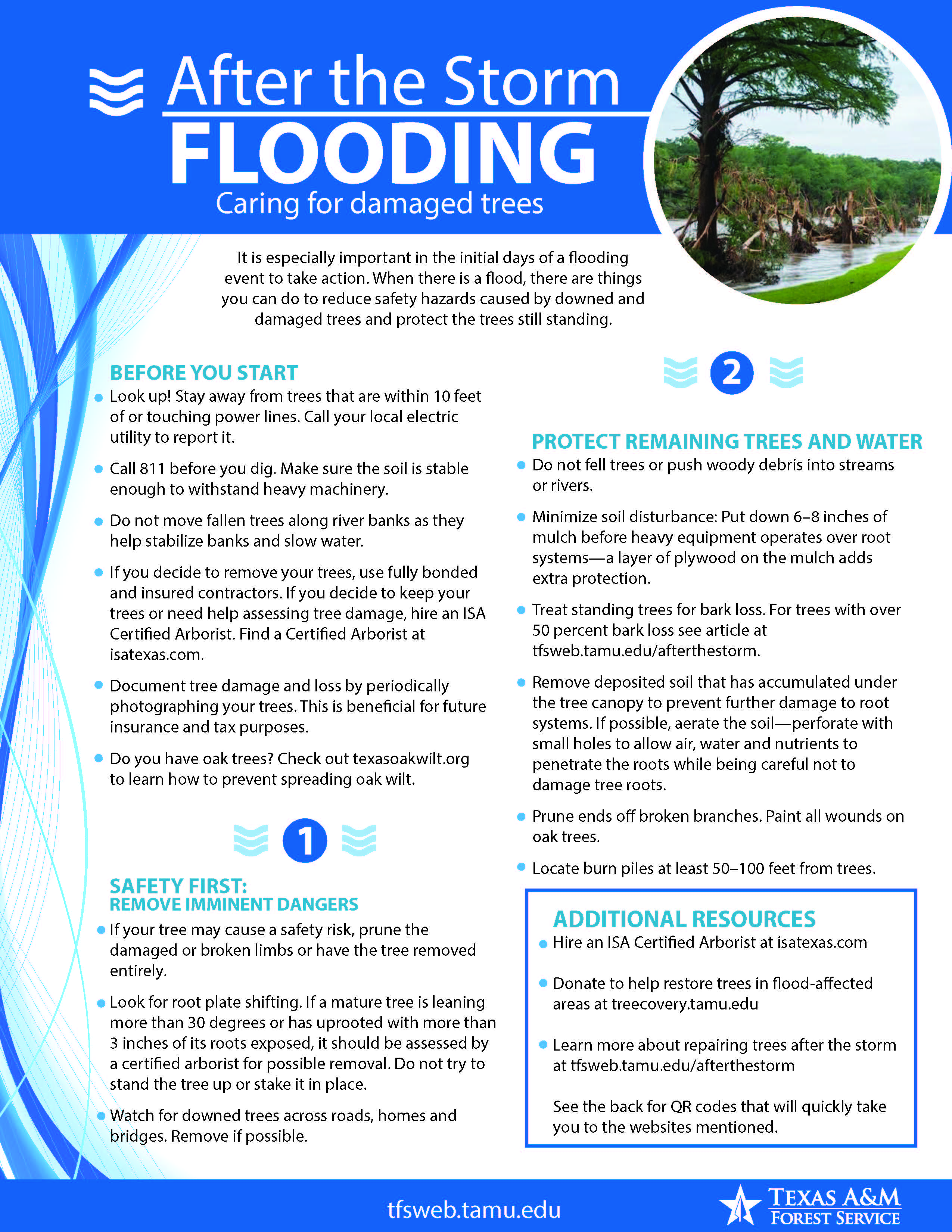
Download After the Storm: Flooding Fact Sheet
We are often asked, "What is one thing I can do to help my trees?" The answer is pretty simple and better yet it is often free. Listen to this week’s episode to find out what’s the key to healthier and happier trees.
Tree of the week – Waugh Campground Oak from the Famous Trees of Texas Centennial Edition. http://tamupress.com/product/Famous-Trees-of-Texas,8201.aspx
Upcoming Tree Events:
Texas Tree Climbing Championship in Fort Worth at Trinity Park June 12-13 www.isatexas.com
Certified Arborist Preparation Class in Austin starting June 15. More information at www.treefolks.org/CAP
Tune in for next week’s topic: loving your tree to death.
We have talked about why trees are key to healthier and happier communities. Now let’s learn about the value your trees can have for you. Trees can be a great investment.
Look for a Registered Consulting Arborist to help you appraise the value of your trees at https://www.asca-consultants.org/
Visit our website tfsweb.tamu.edu to find more stories like this week’s Tree of the Week from the Famous Trees of Texas.
You can find upcoming tree events at isatexas.com
Trees need five things to grow well. Listen to this week’s podcast to find out what those things are and how they impact our tree care decisions.
This week’s Tree of The Week is the Columbus Oak from the Centennial Edition of Famous Trees of Texas by Gretchen Riley and Pete Smith. http://www.tamupress.com/product/Famous-Trees-of-Texas,8201.aspx
Tree Event: Bilingual Tree Care Workshop in Schertz Thursday, May 13. http://sa-aa.com/
Next week we will talk about trees as key investments.
As they say at ISA, “Trees are good. Trees require care. Arborists care for trees.”
Join us and find out the key to hiring a quality pro to help you care for your trees.
Resources:
Texas Chapter of ISA www.isatexas.com ISA Consumer information www.treesaregood.com ISA www.isa-arbor.com
Upcoming tree events at www.sa-aa.com
In this episode we talk about why trees are key to healthier and happier towns and cities and why you should care about the trees around you.
.gif) | | |
Air Is Key Way back in episode three we talked about Keys to Tree Growth – one of those keys is hard to see (hopefully). This invisible component of tree growth actually contributes significantly to a trees success and mass. Join us this week as we learn more about how “Air Is Key.” Species Spotlight Listen this week to learn more about an iconic American tree that may have a second chance. American elm was the street tree across the US for many years. An invasive disease wiped them out in many areas, but they may be on the cusp of a comeback. |
|  | |
Trees Are Key
Our Texas Forest Action Plan which helps guide our agency’s efforts for the next 10 years and how you can help us with Urban Forest Sustainability, Woodlands Conservation, Forest Resources, Water Resources, and Wildfire and Public Safety.
Species Spotlight
This week's tree is, usually, well armed and has been introduced to Texas. Black Locust, Robinia pseudoacacia, is a tough tree that can thrive in depleted soils because it is a legume. |